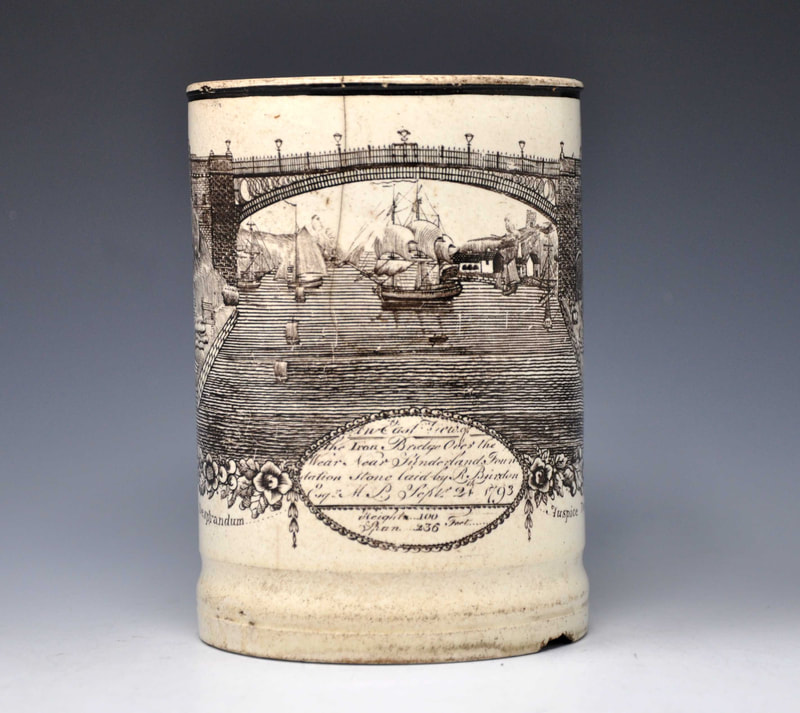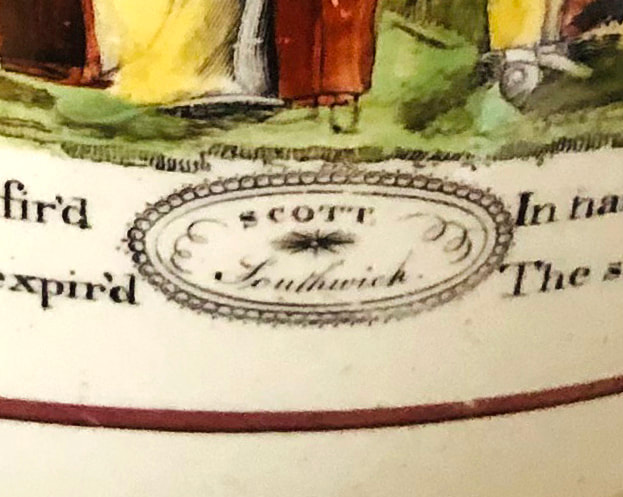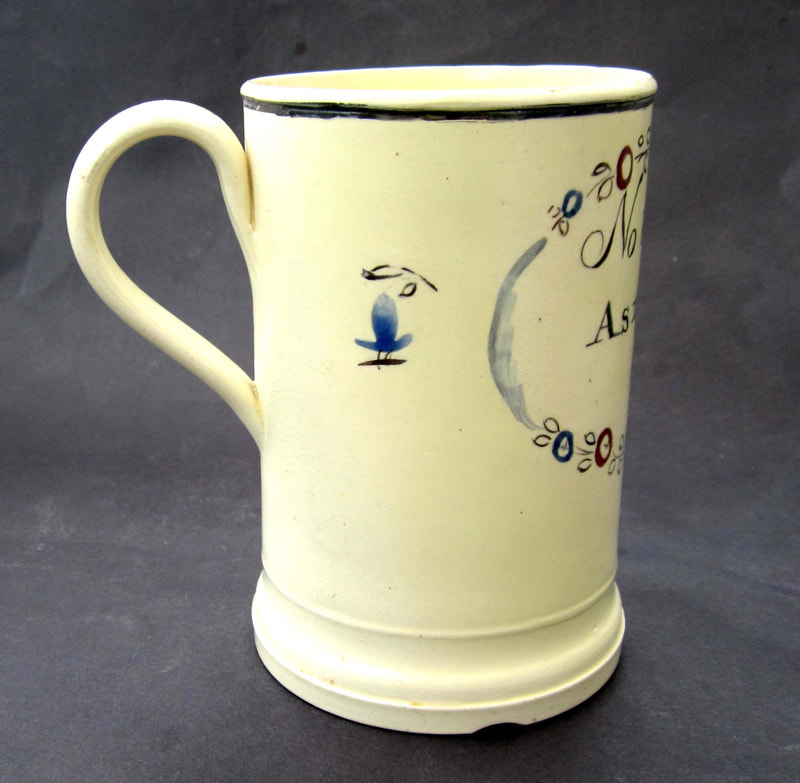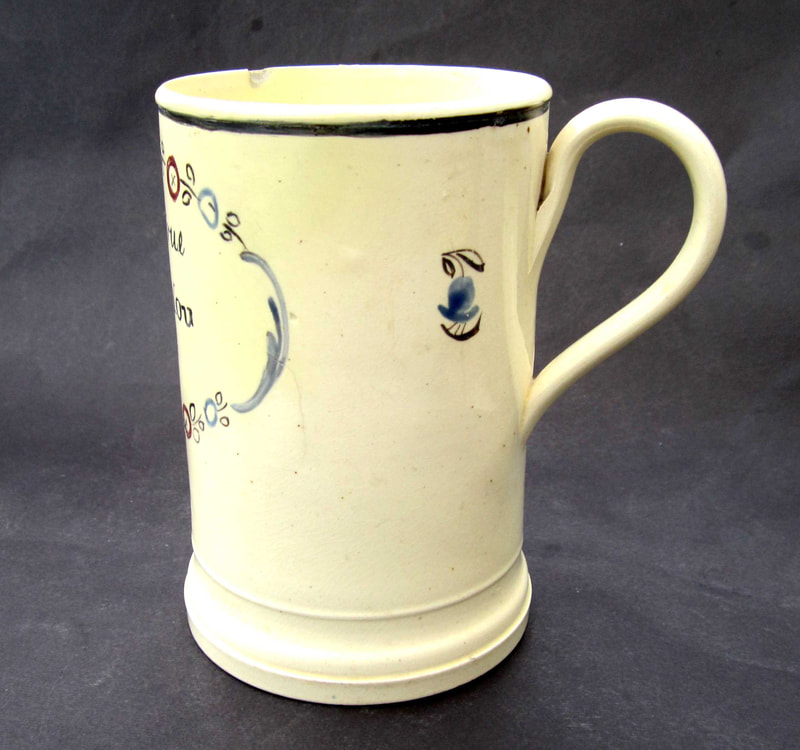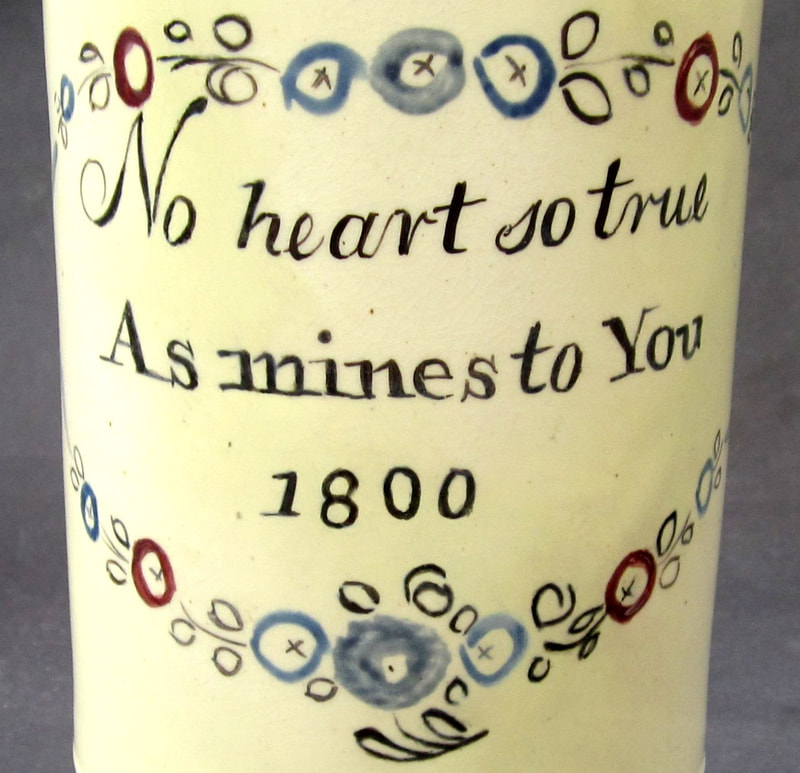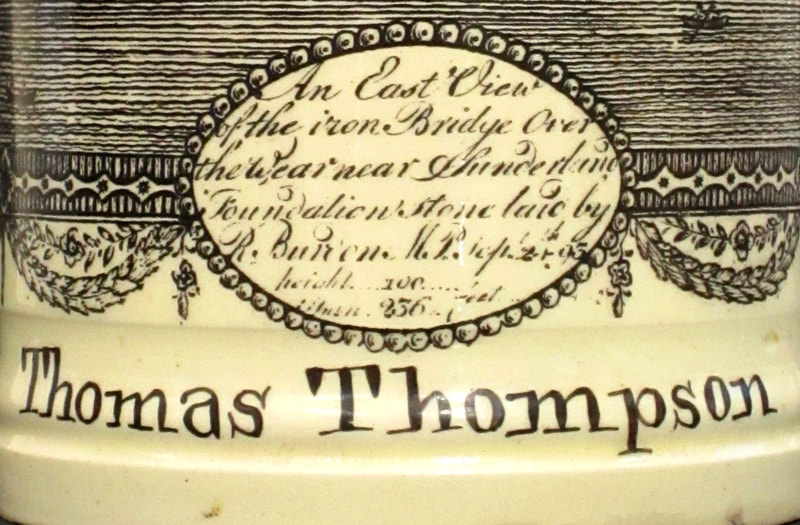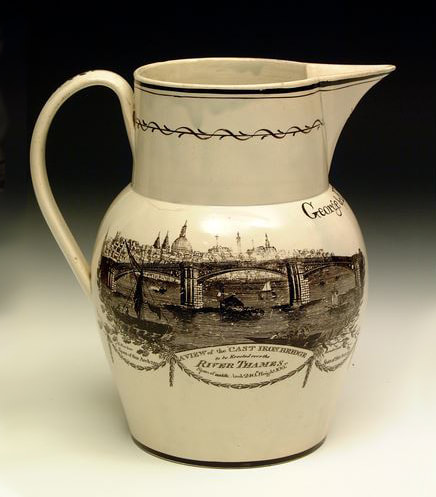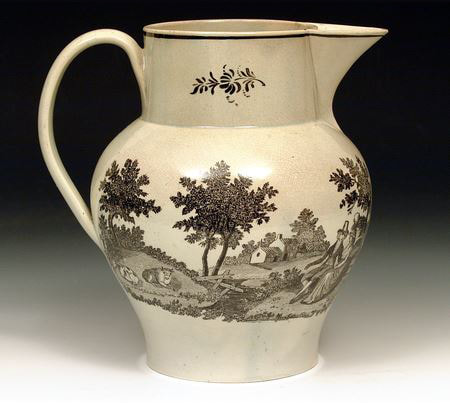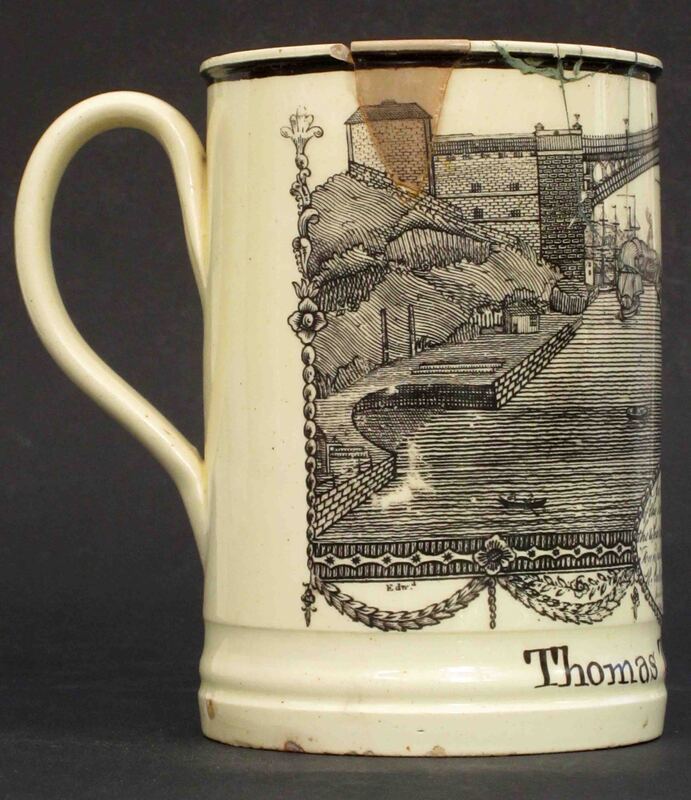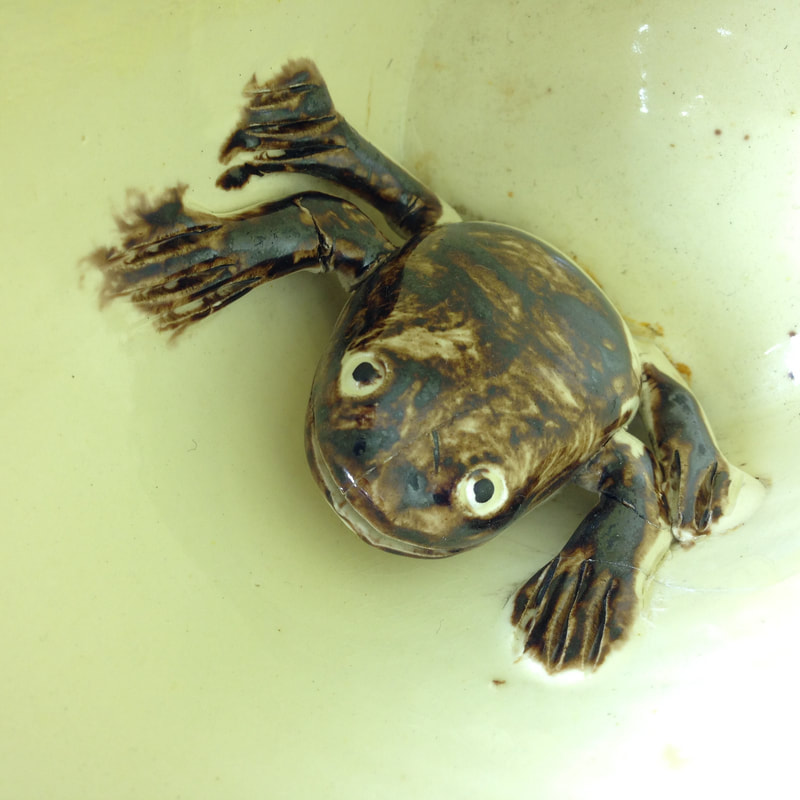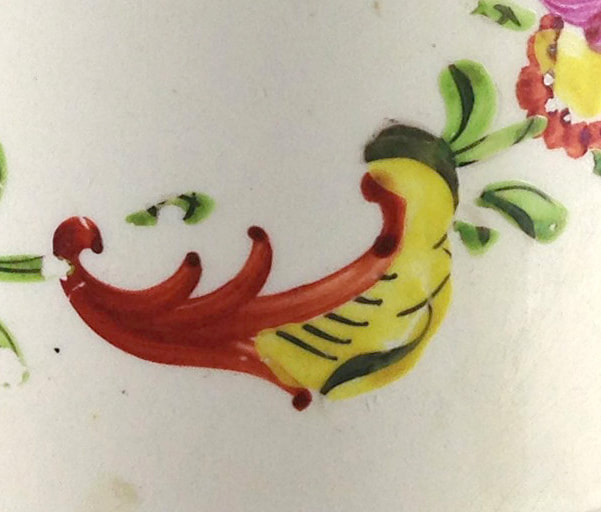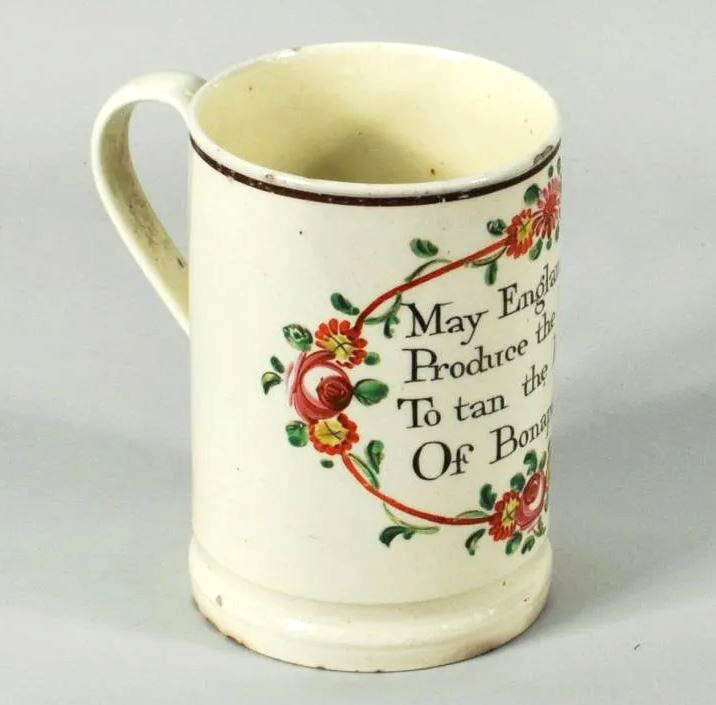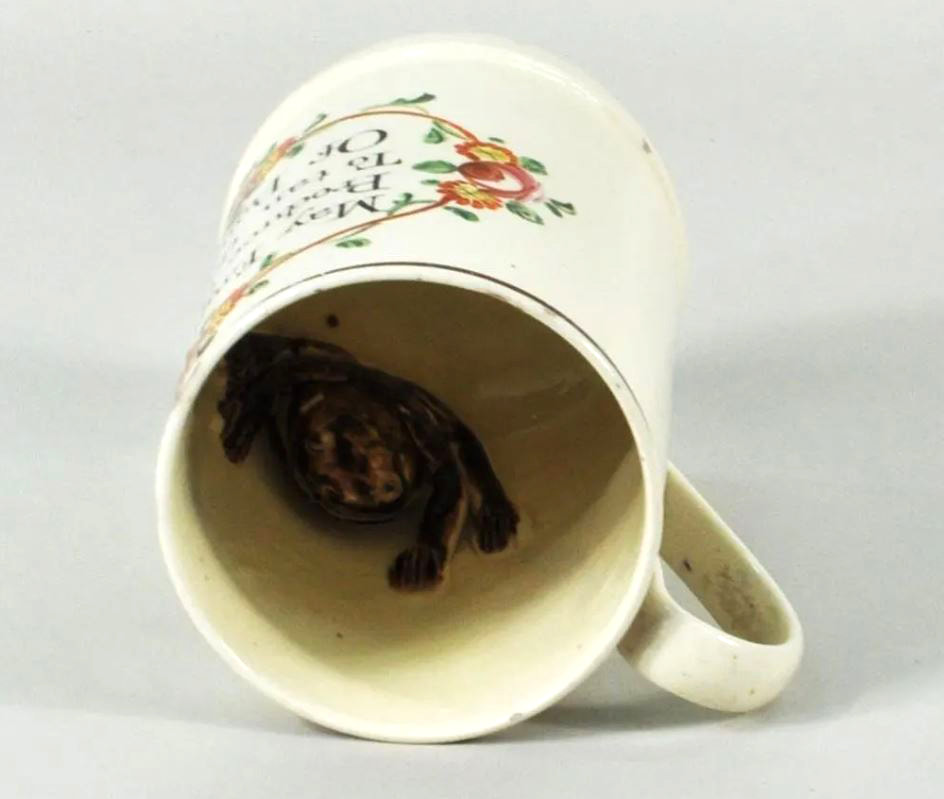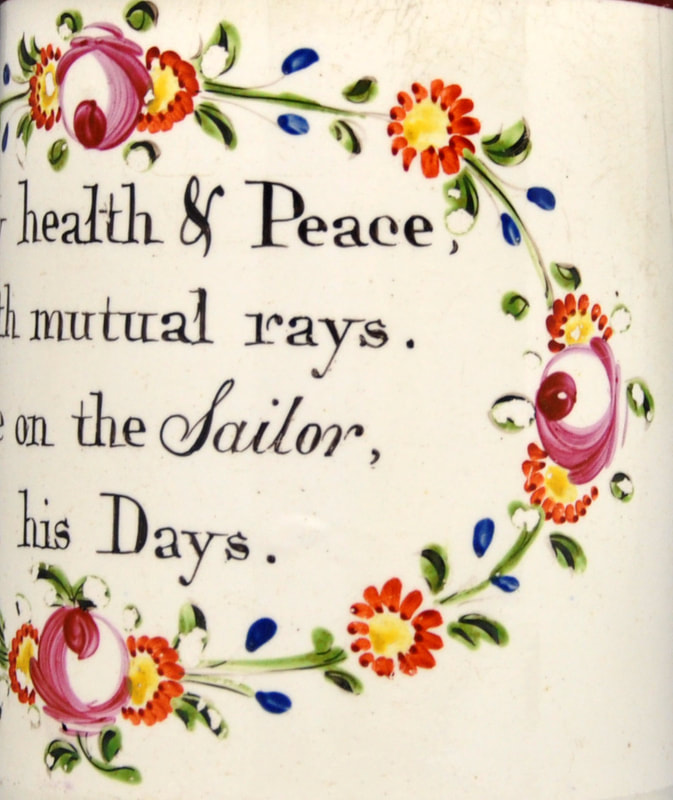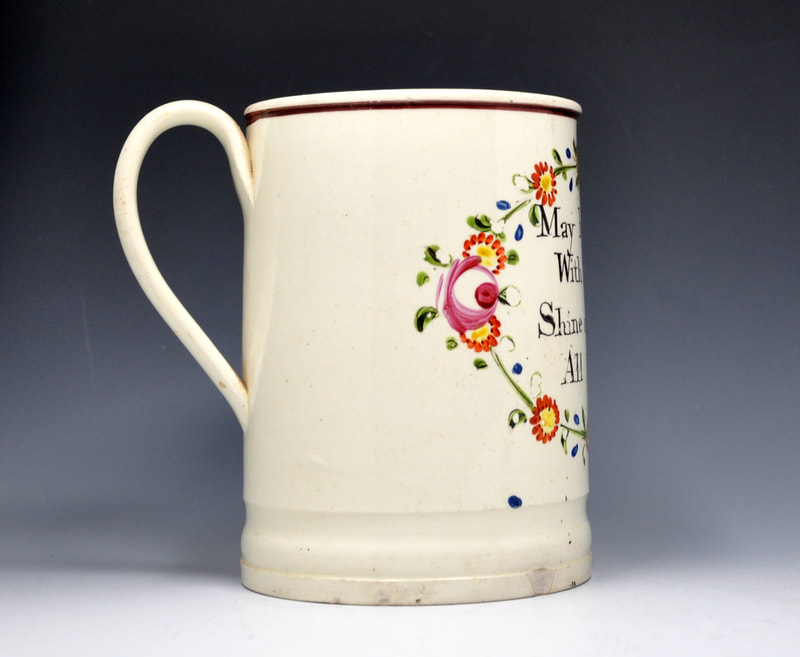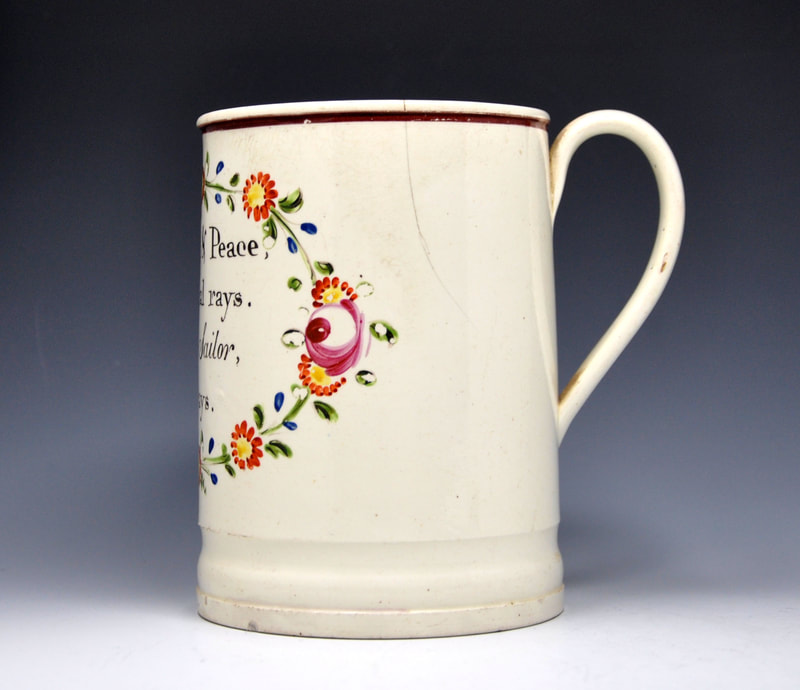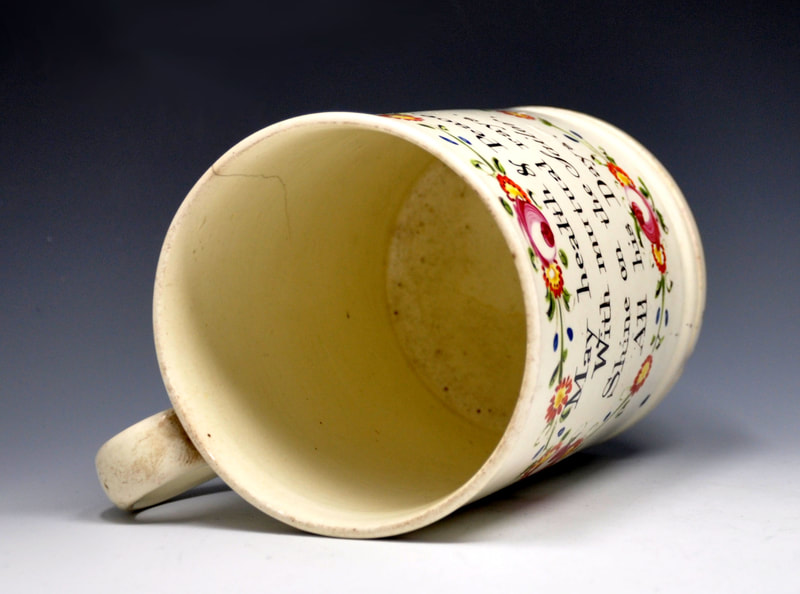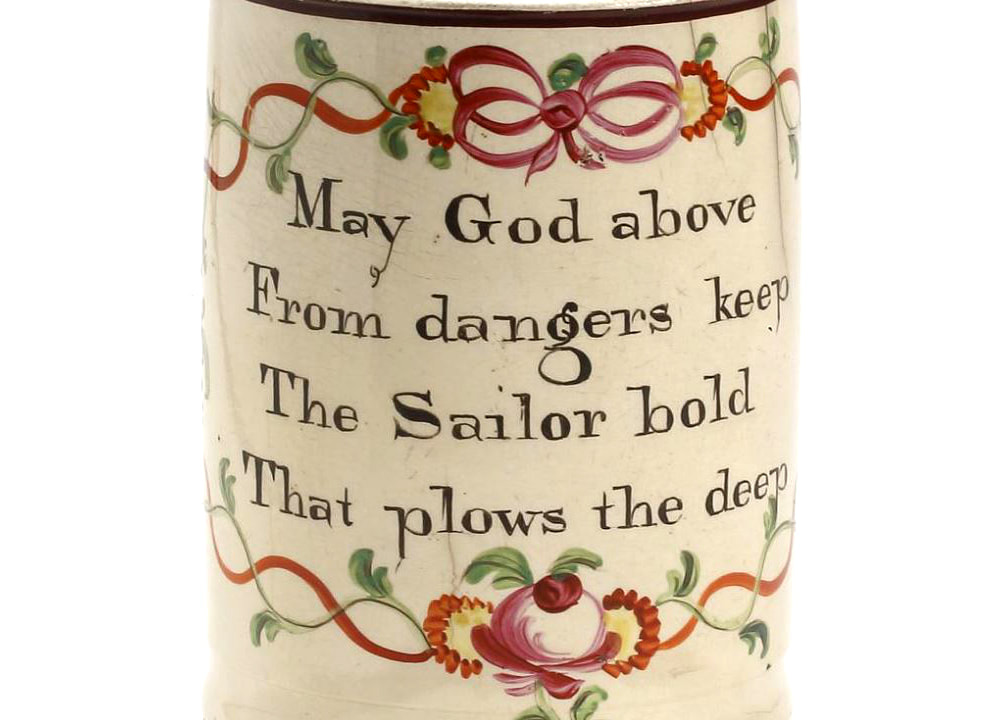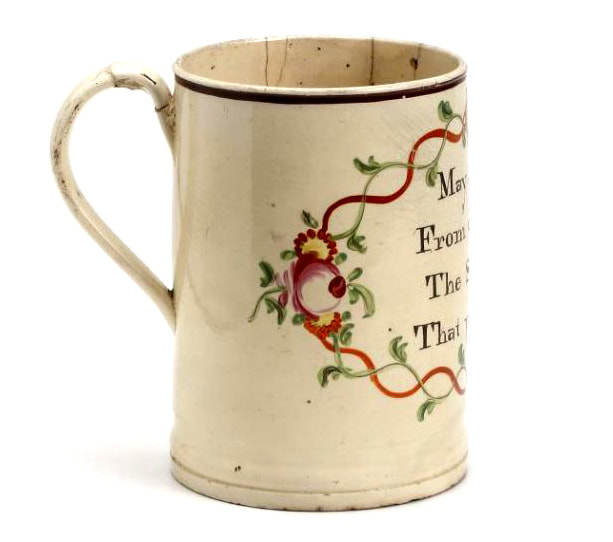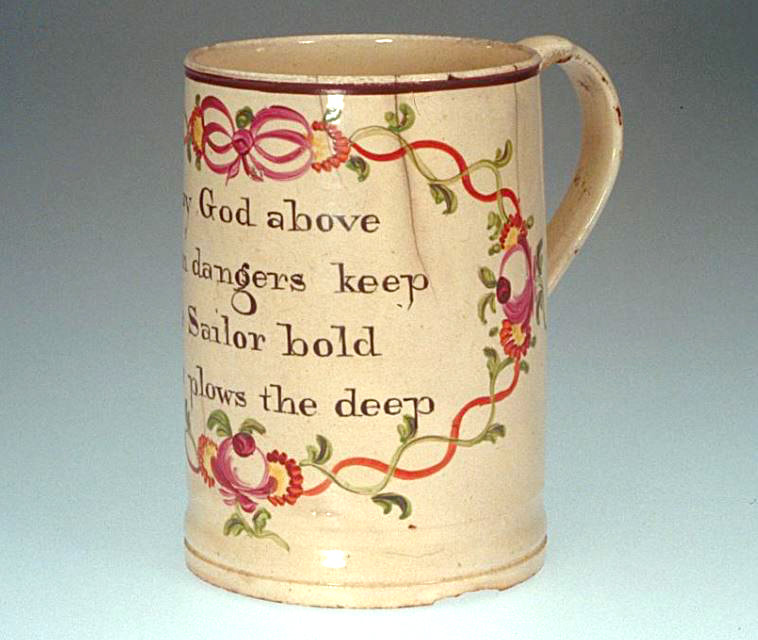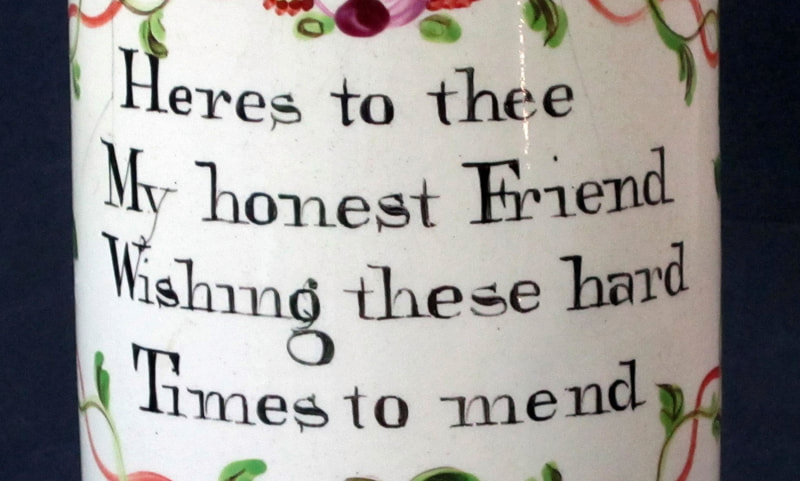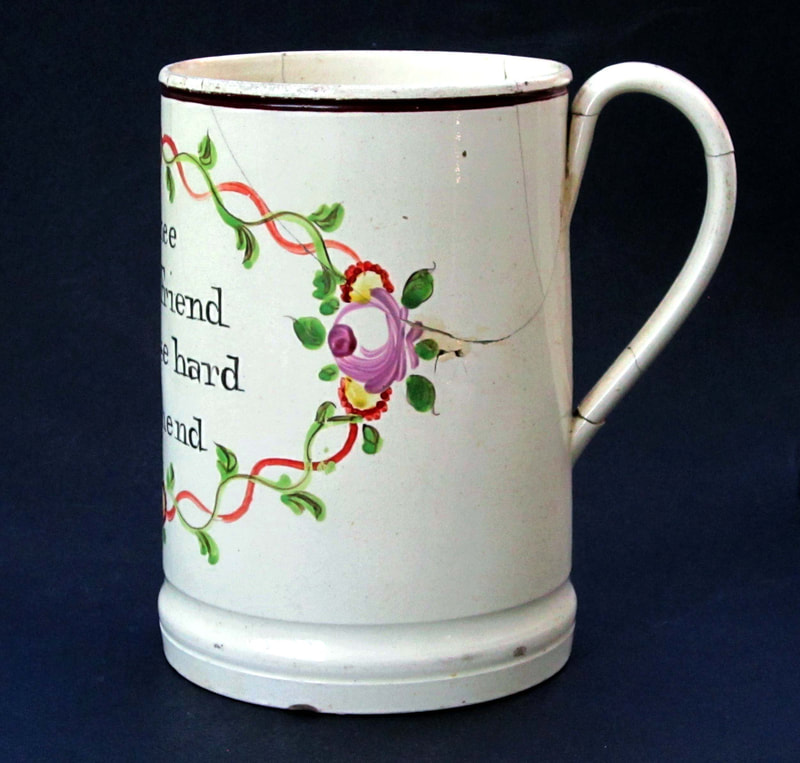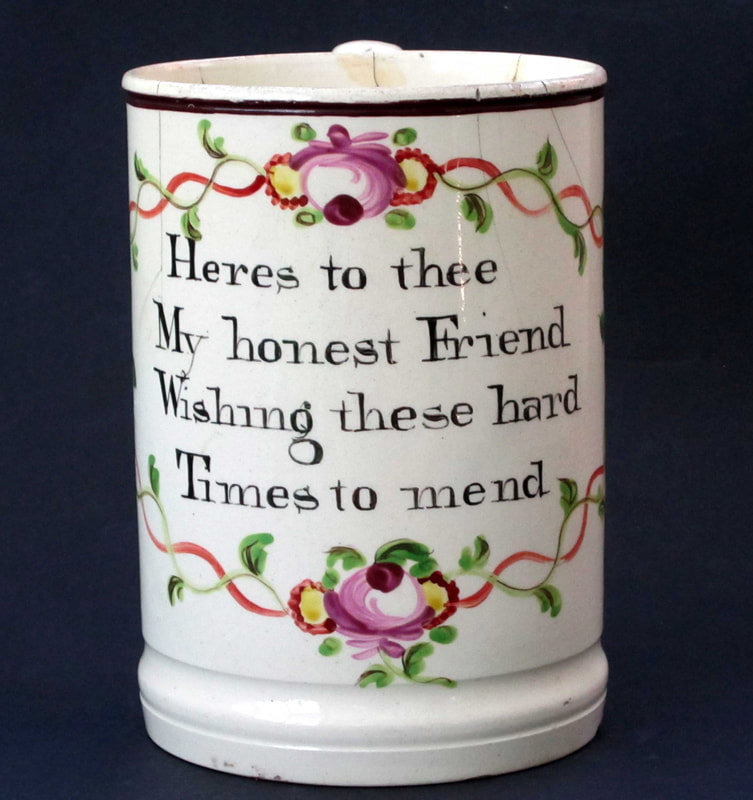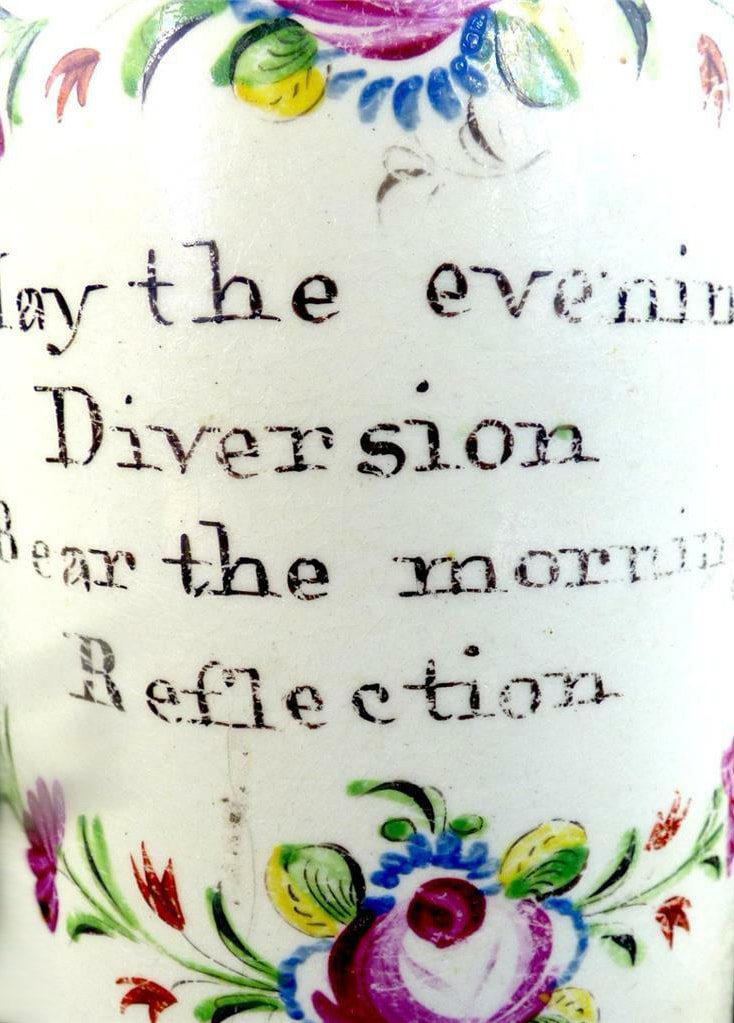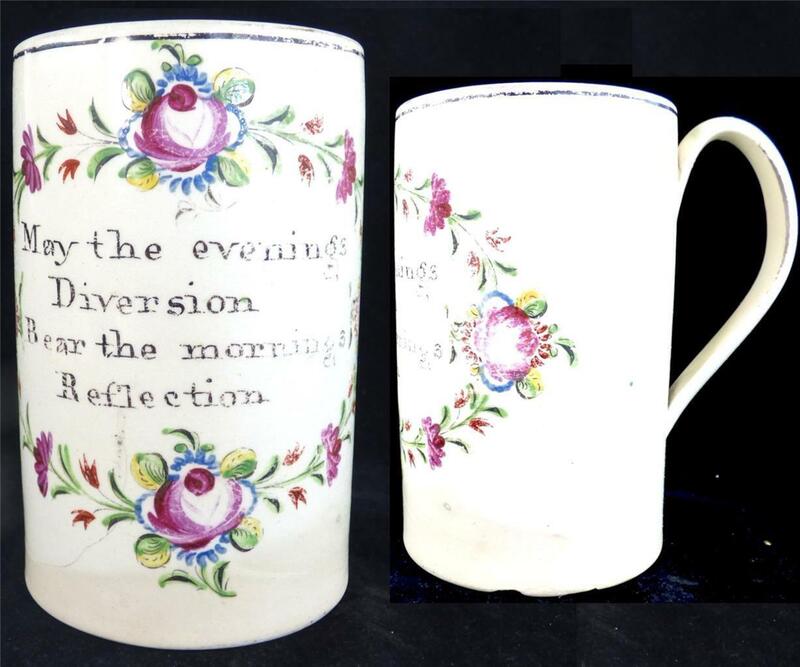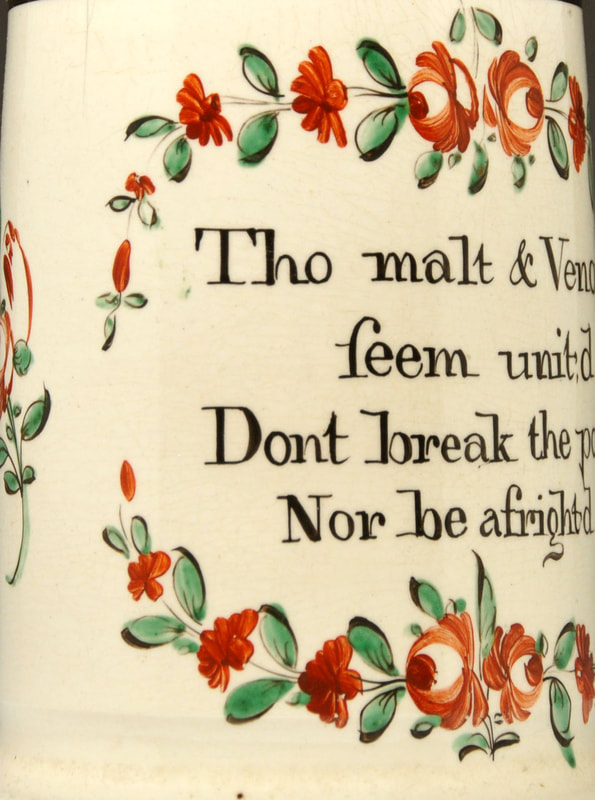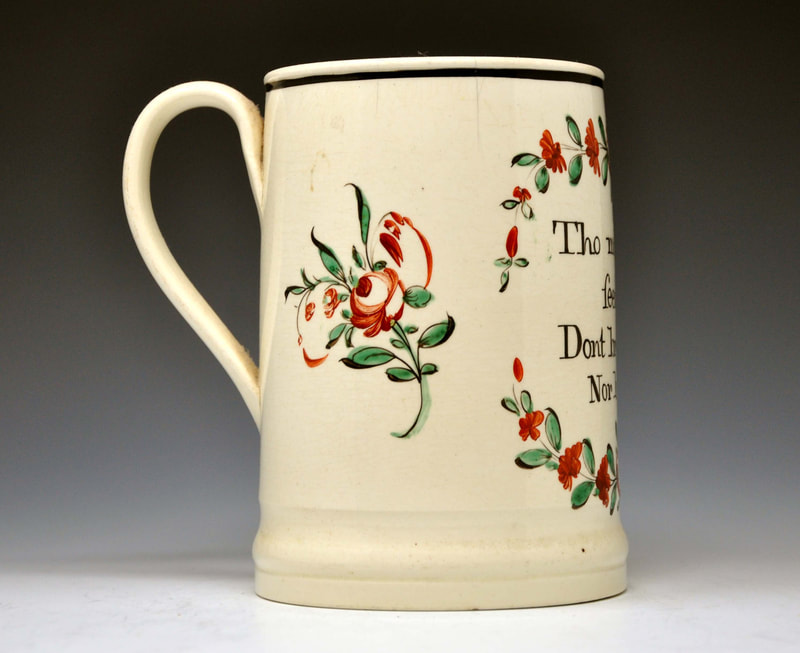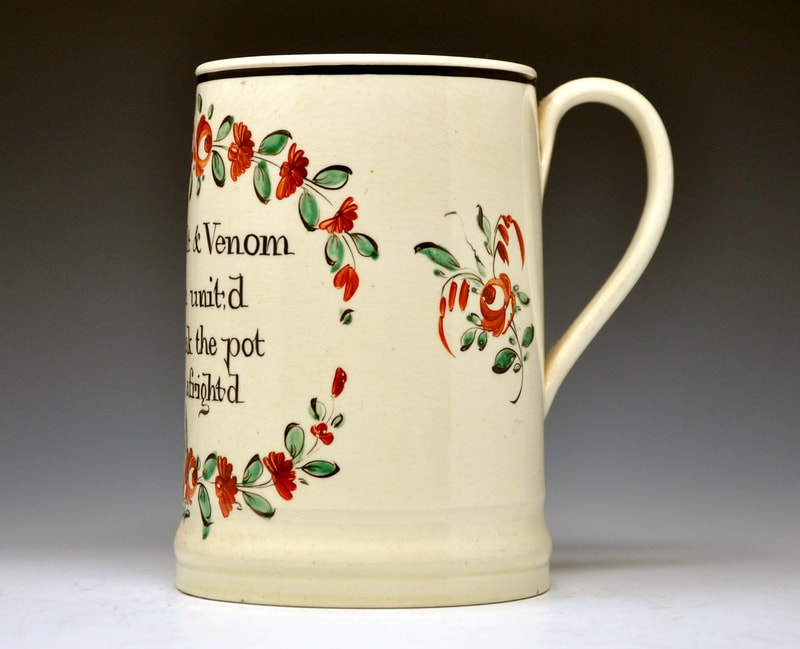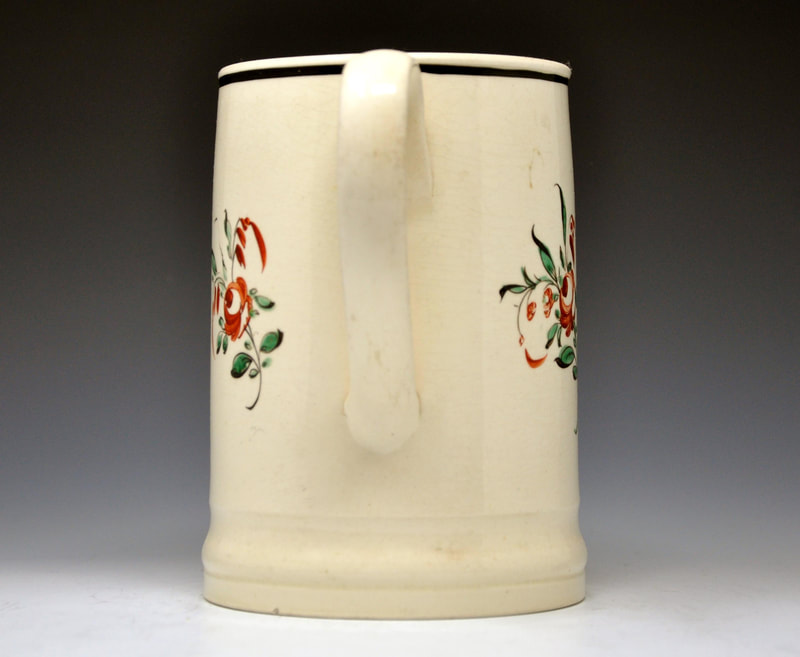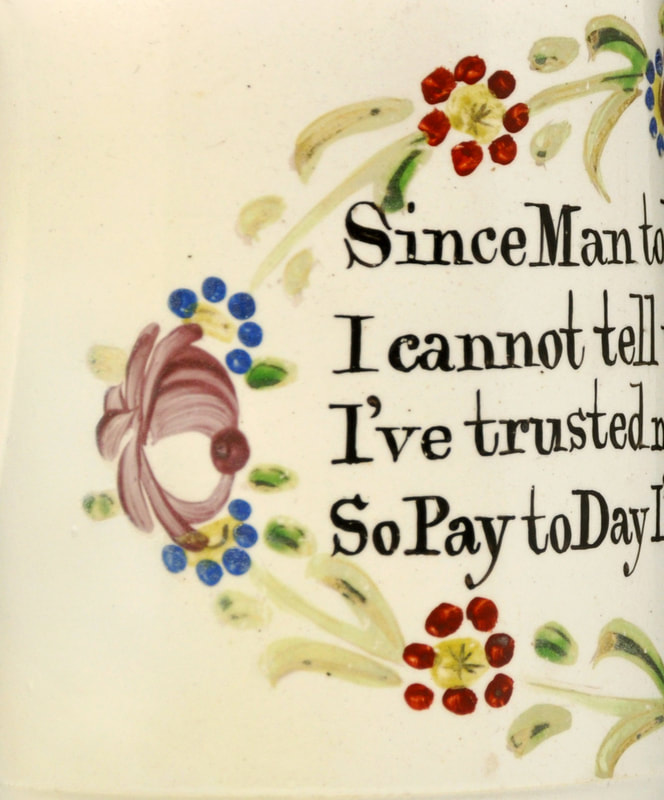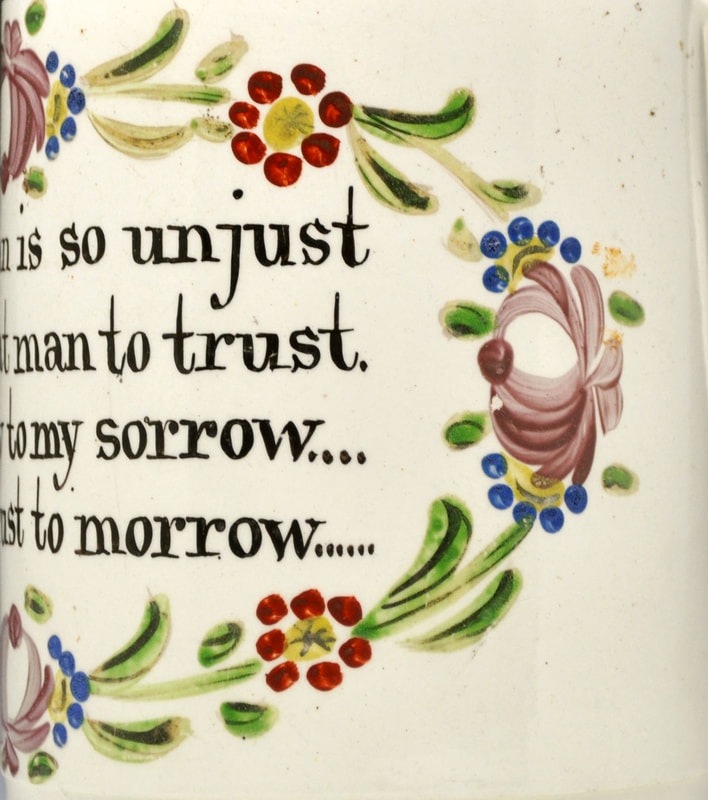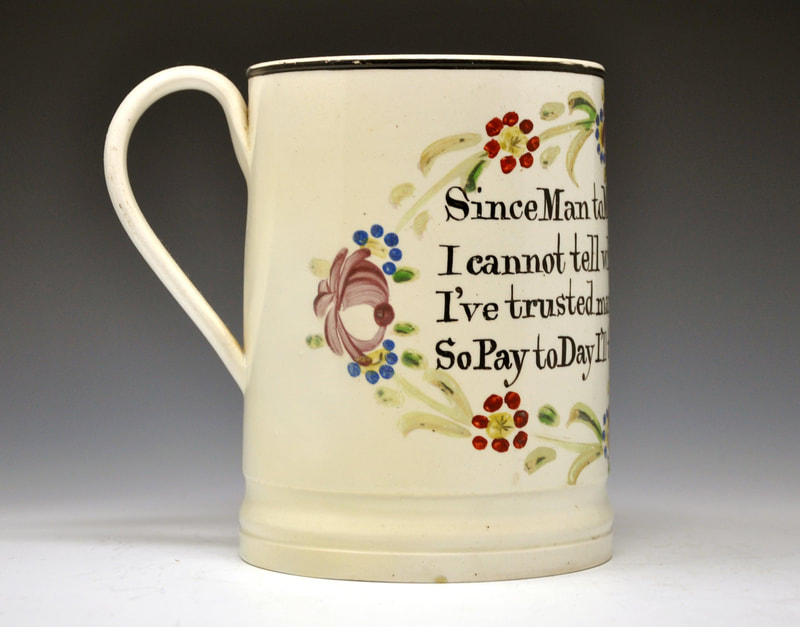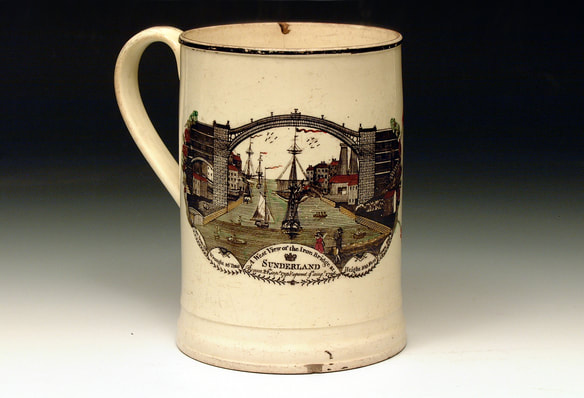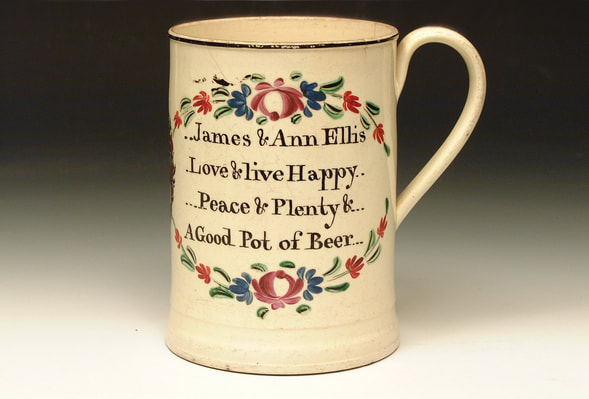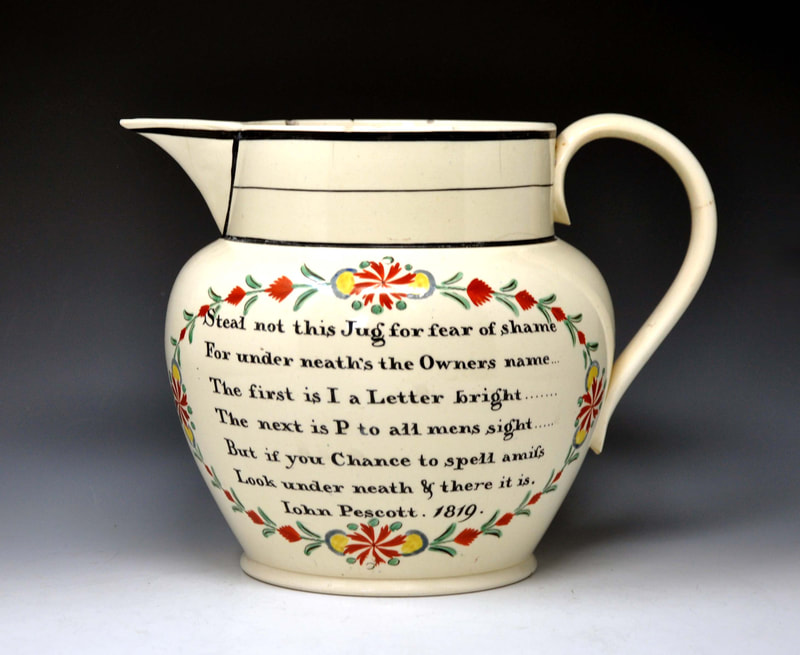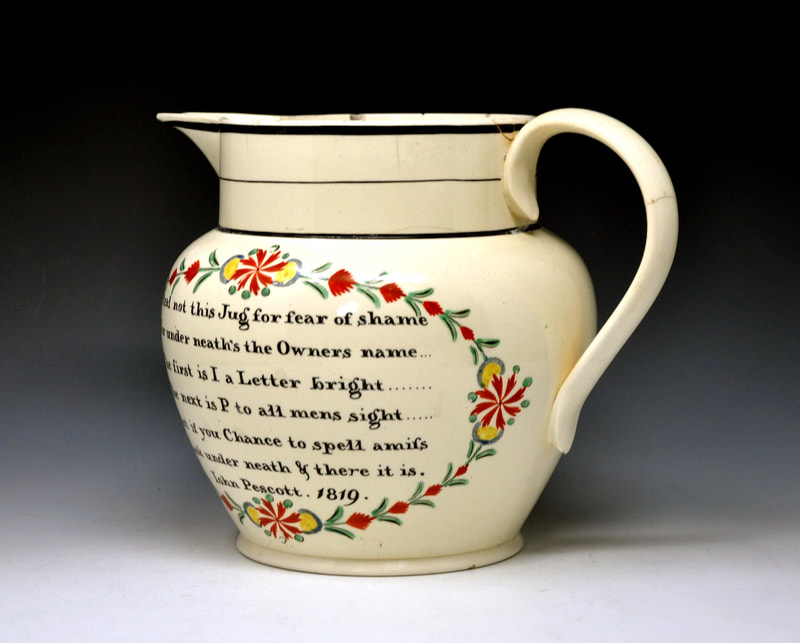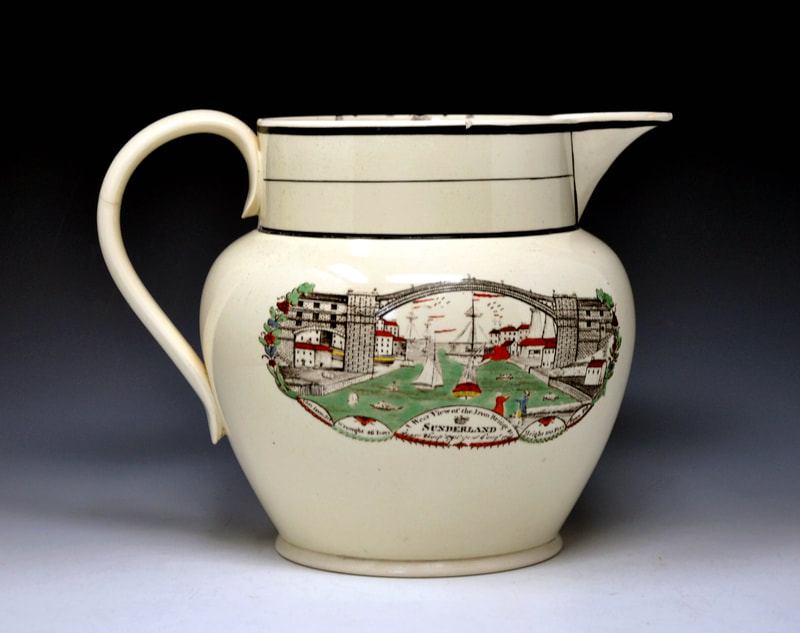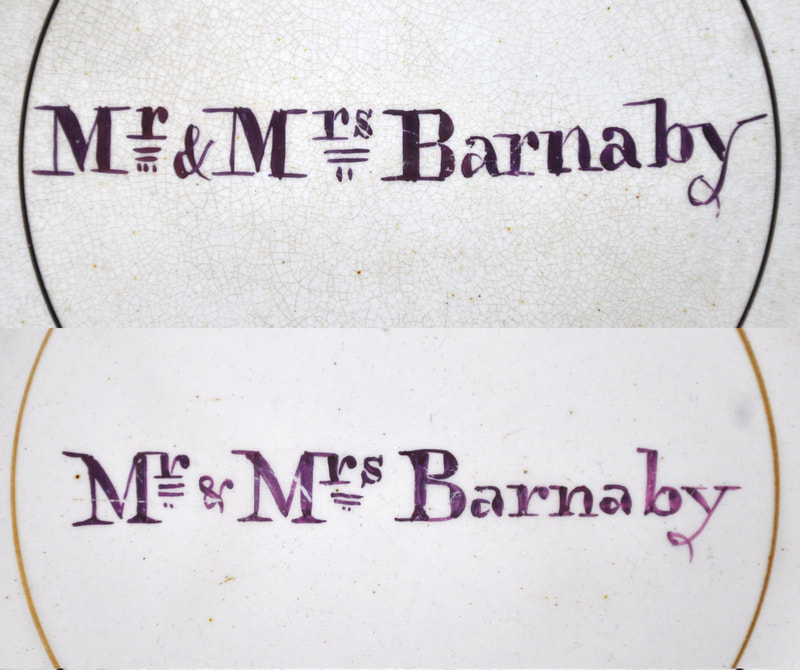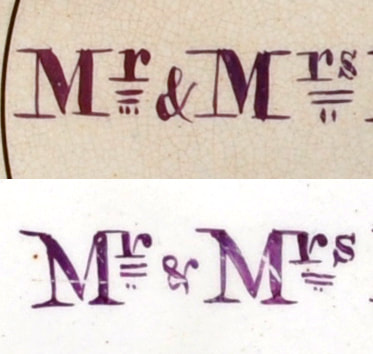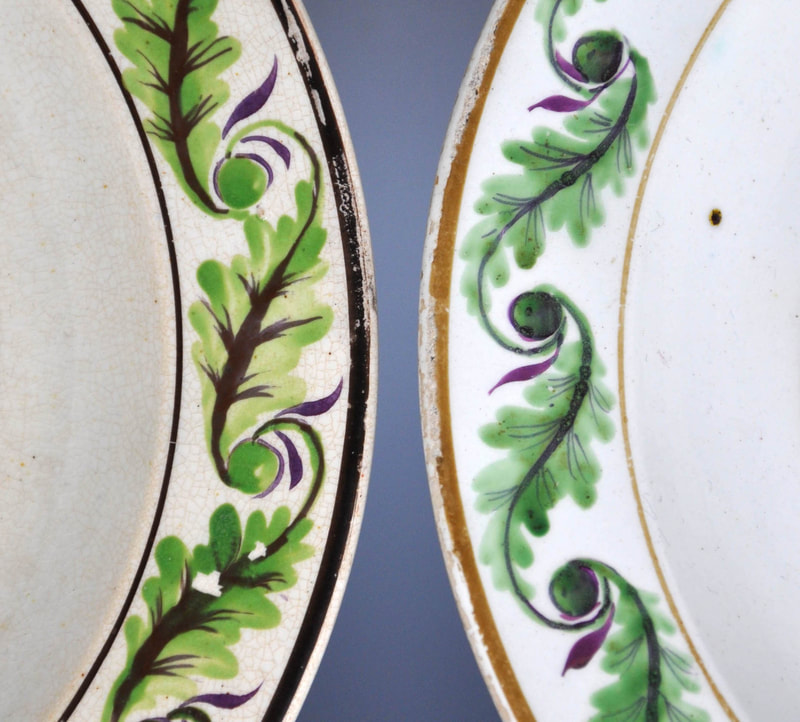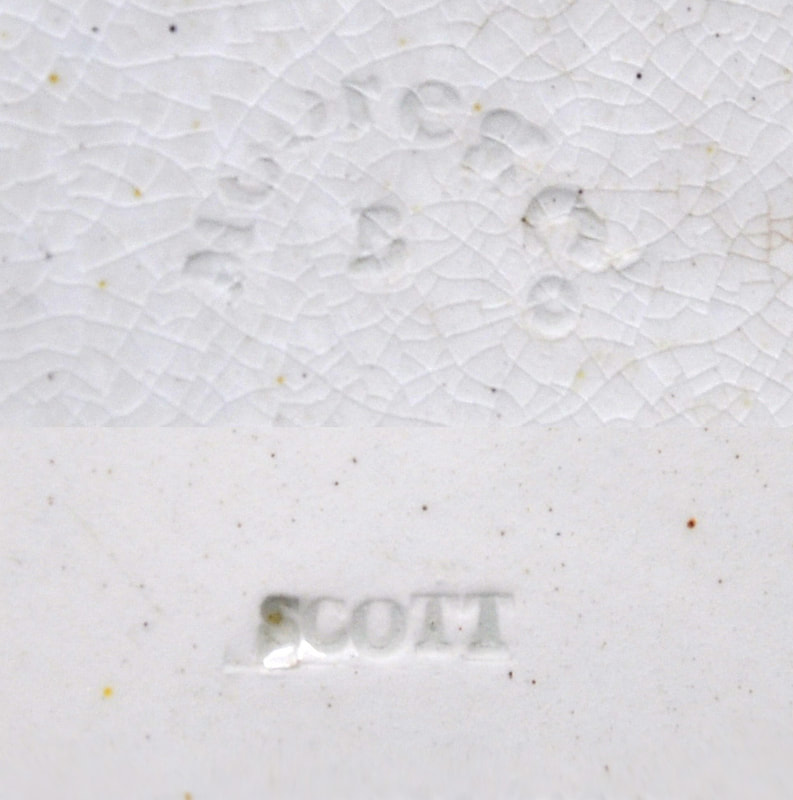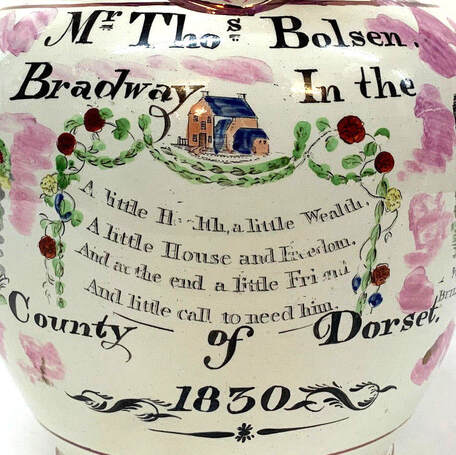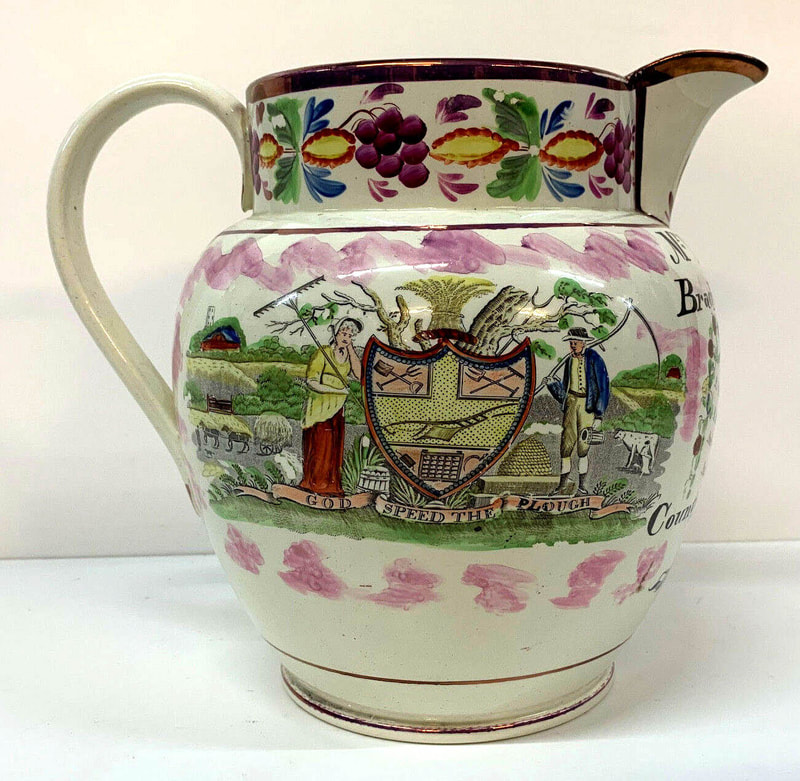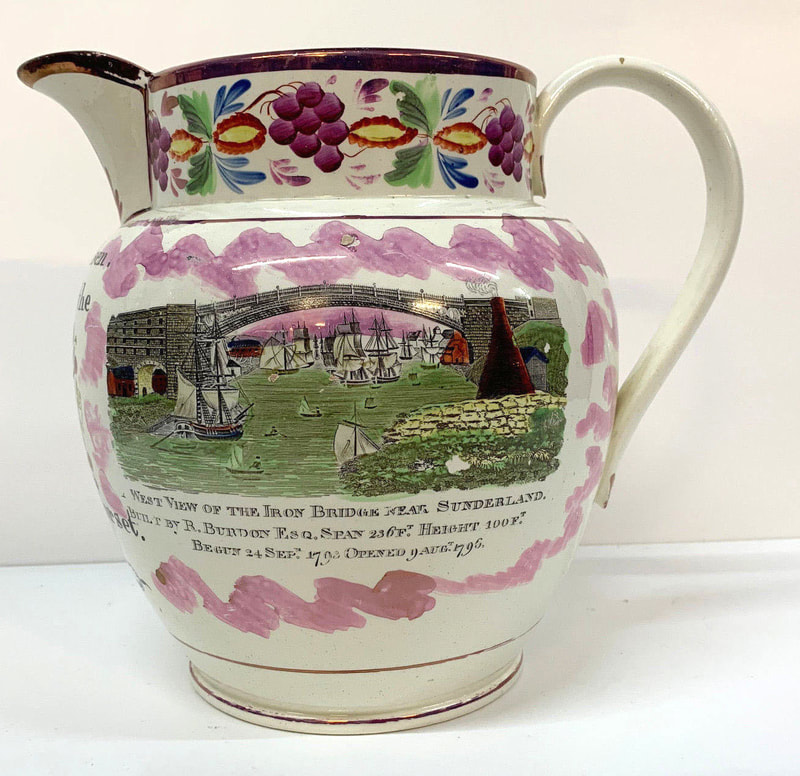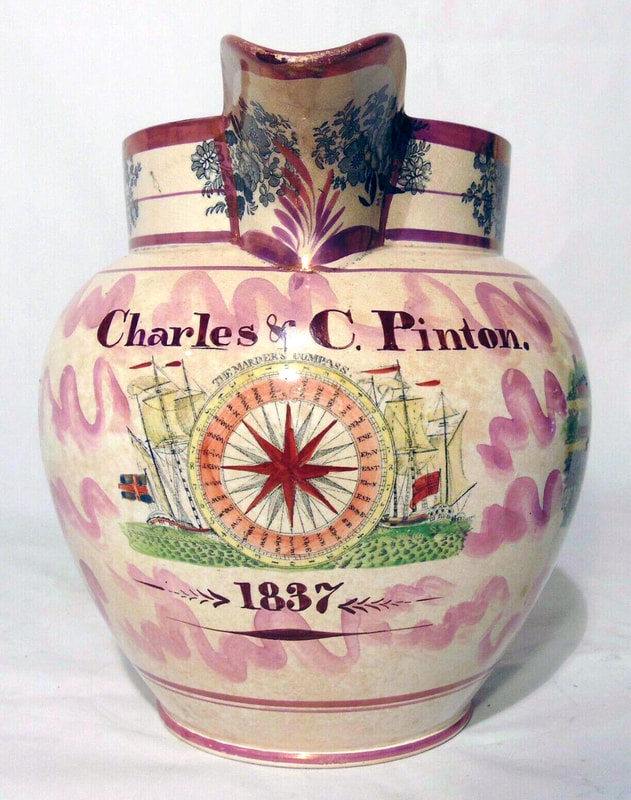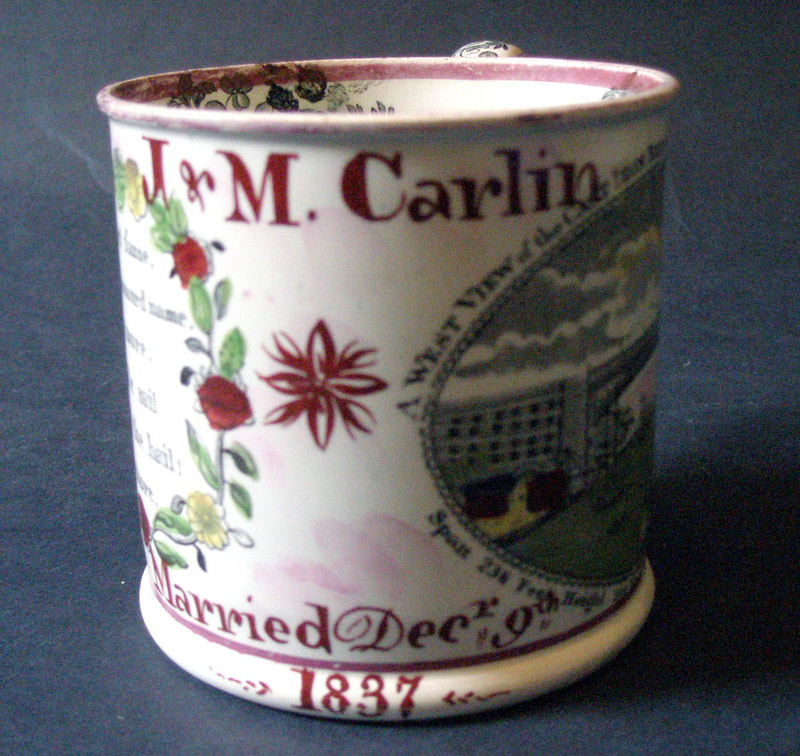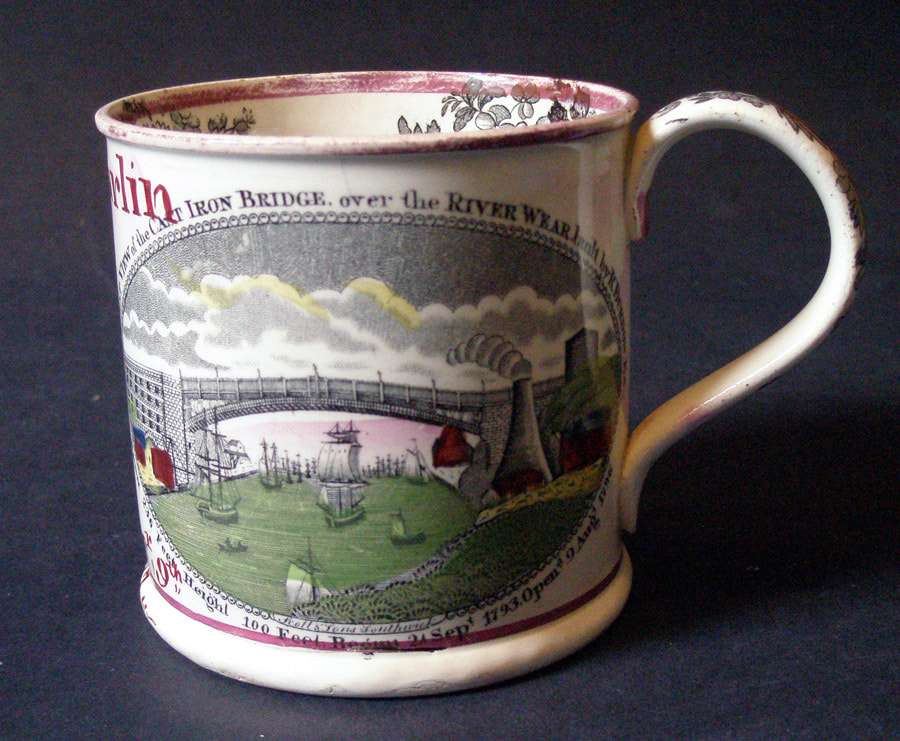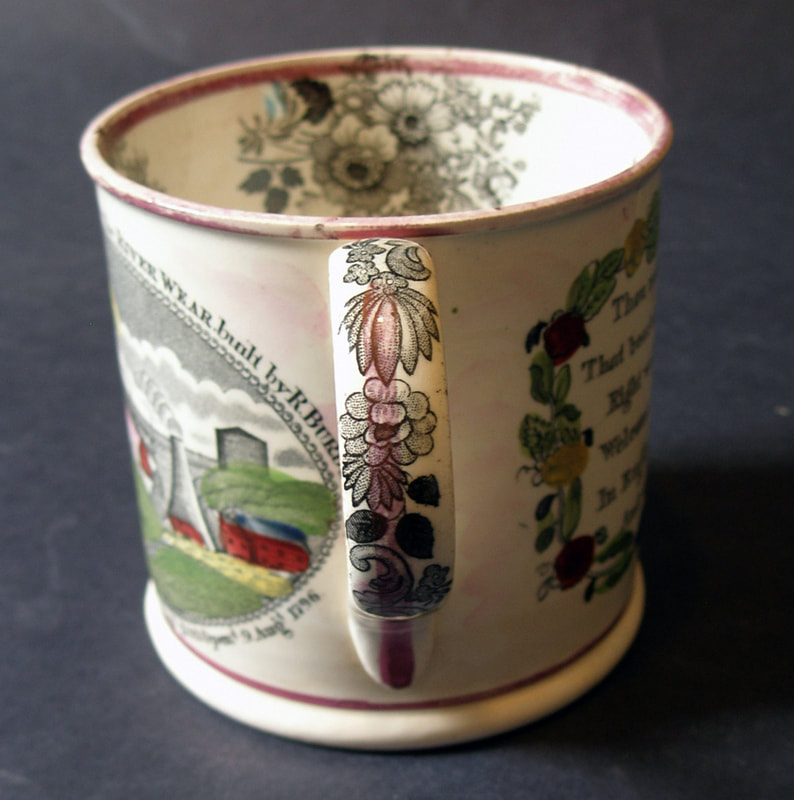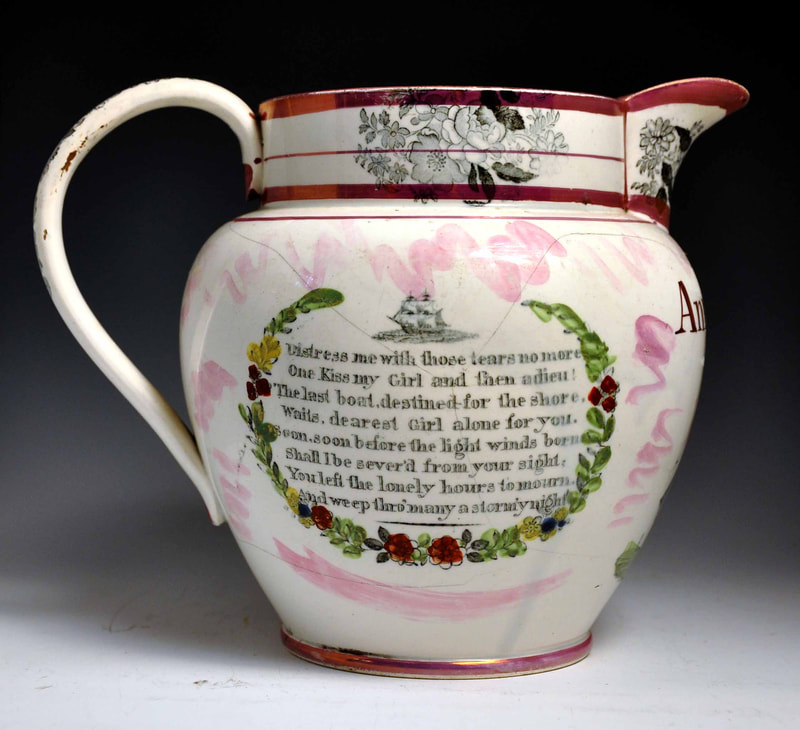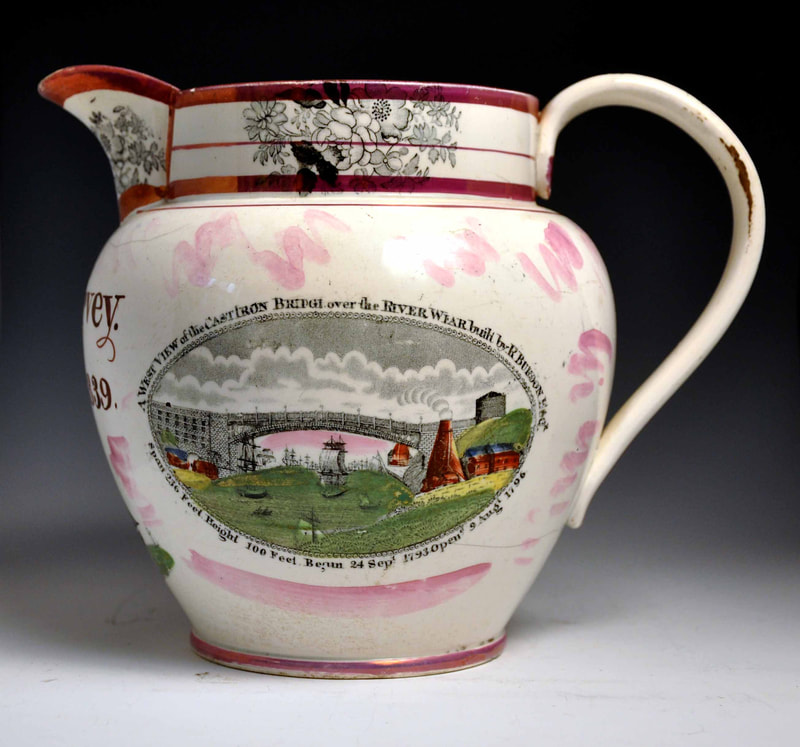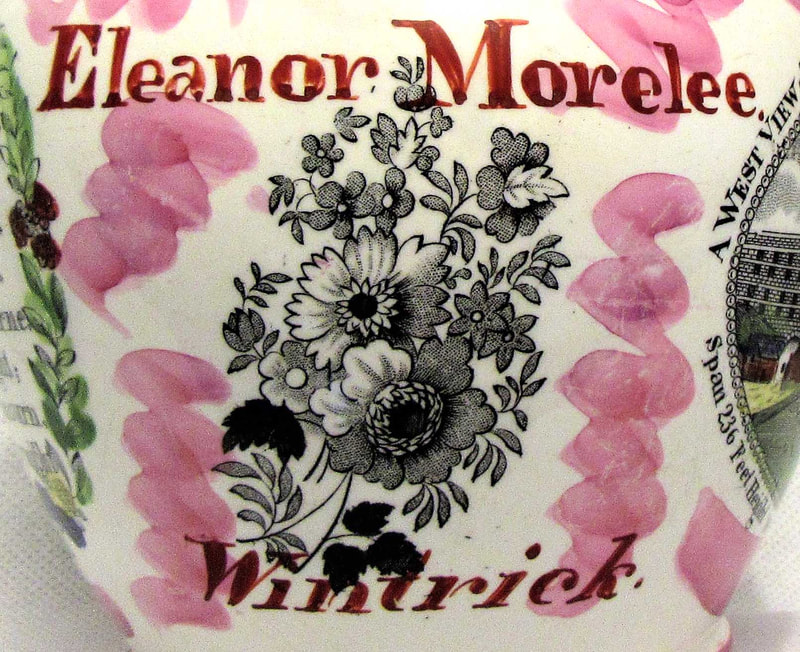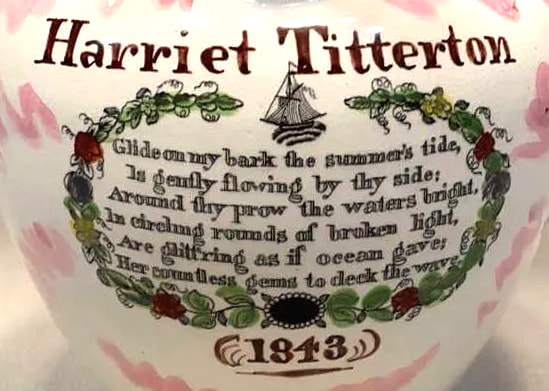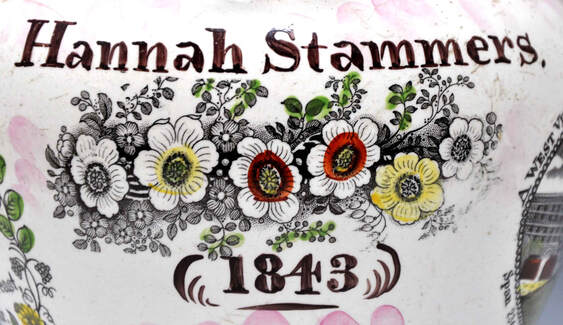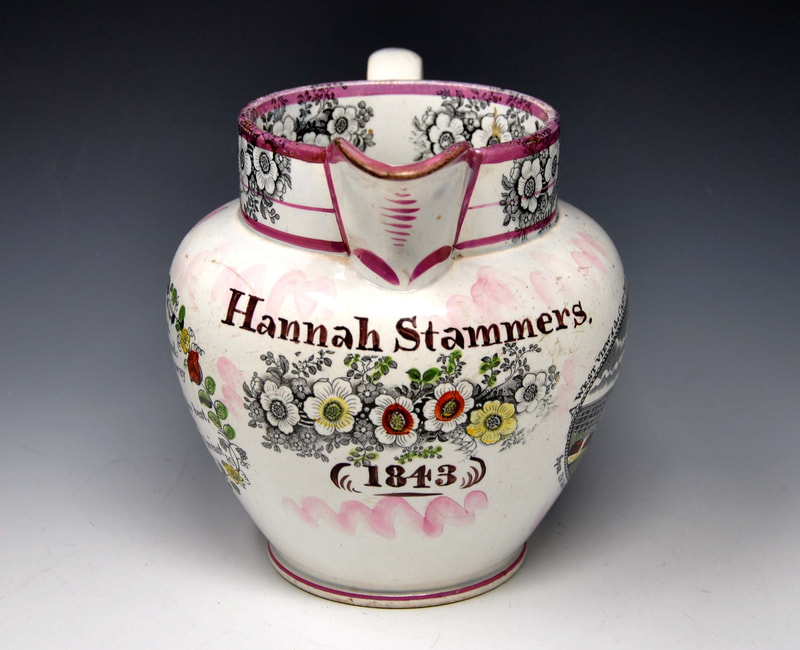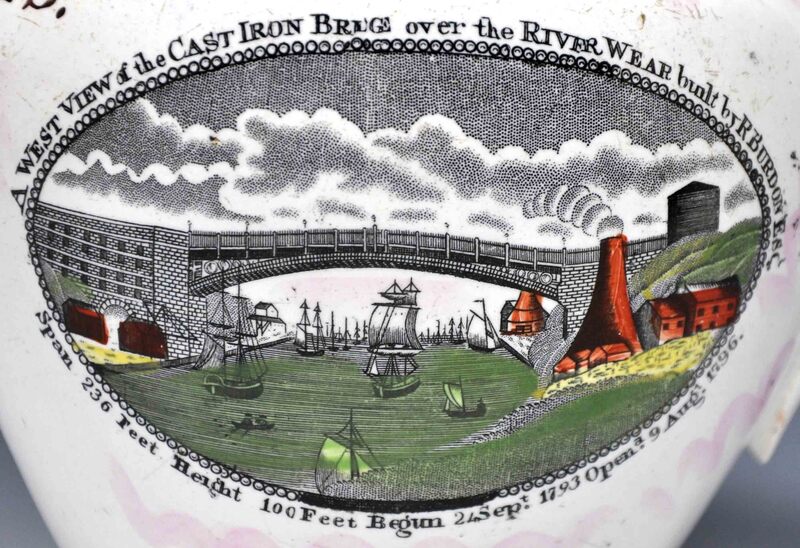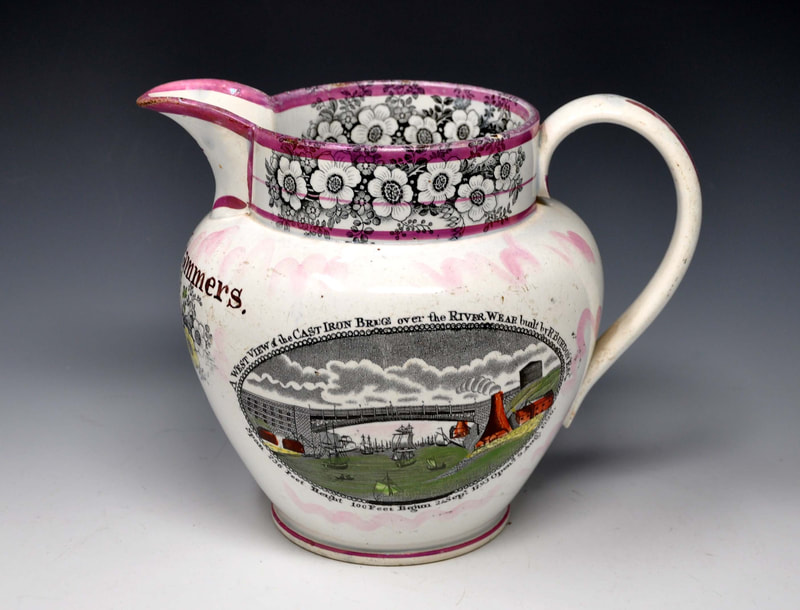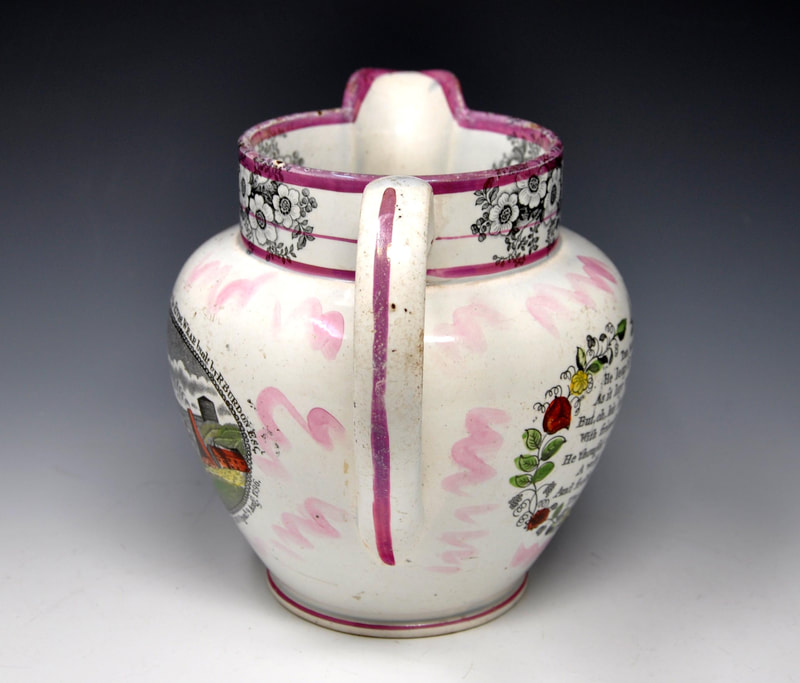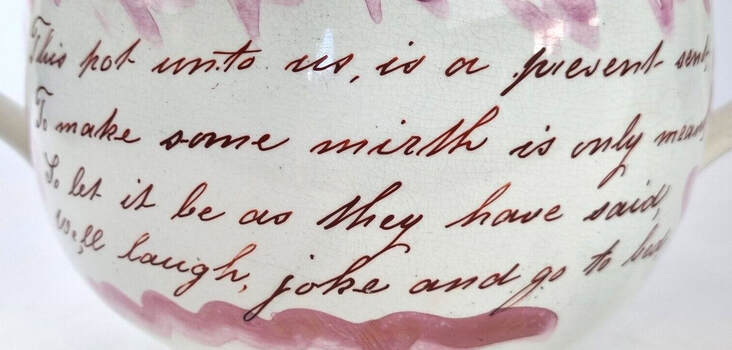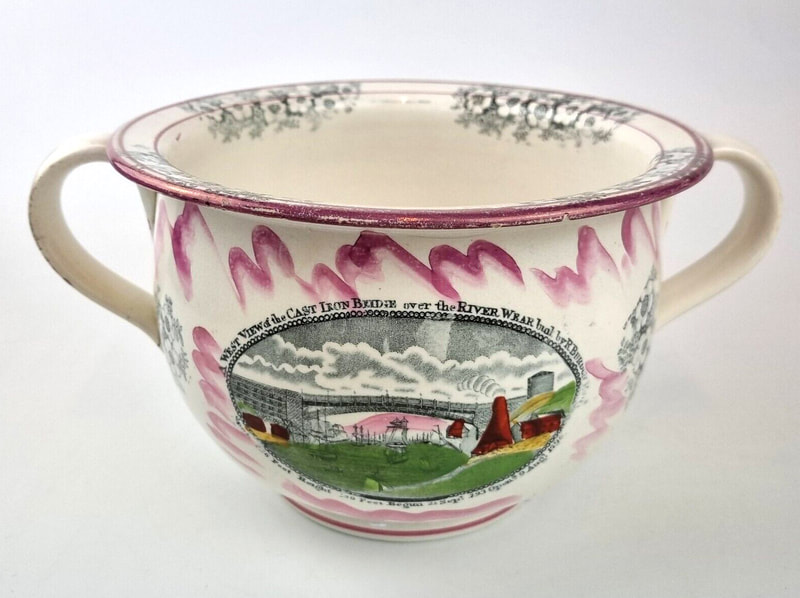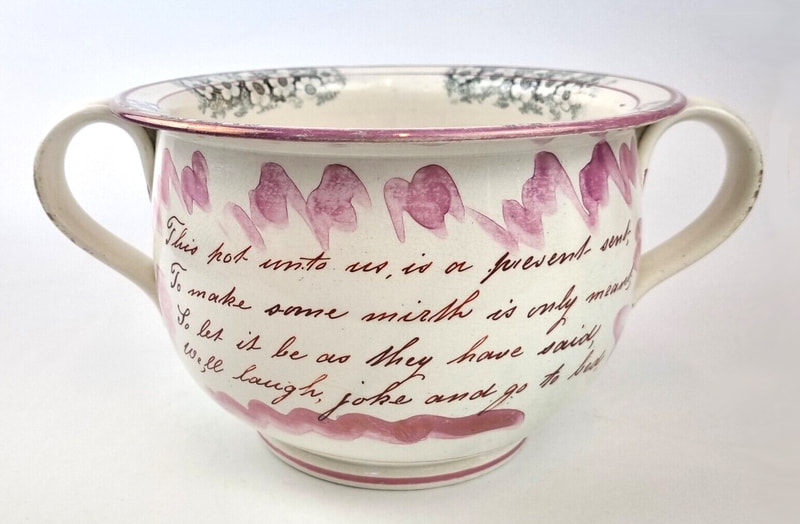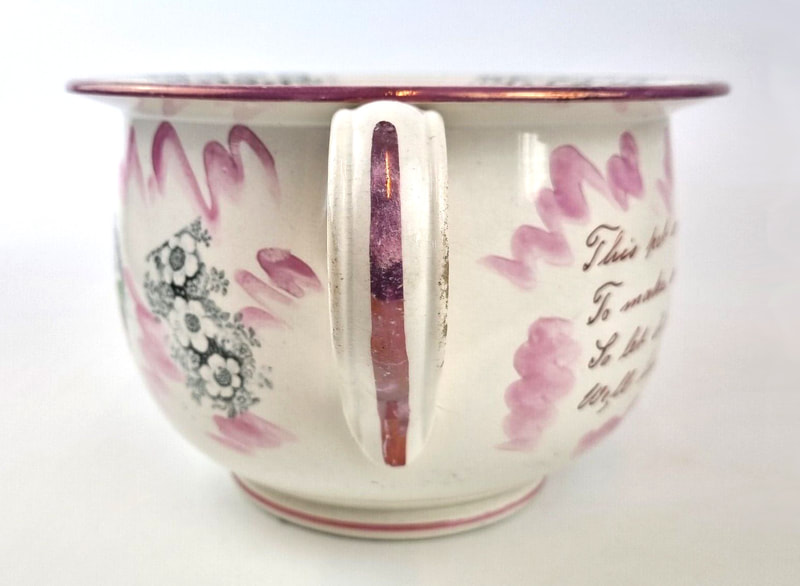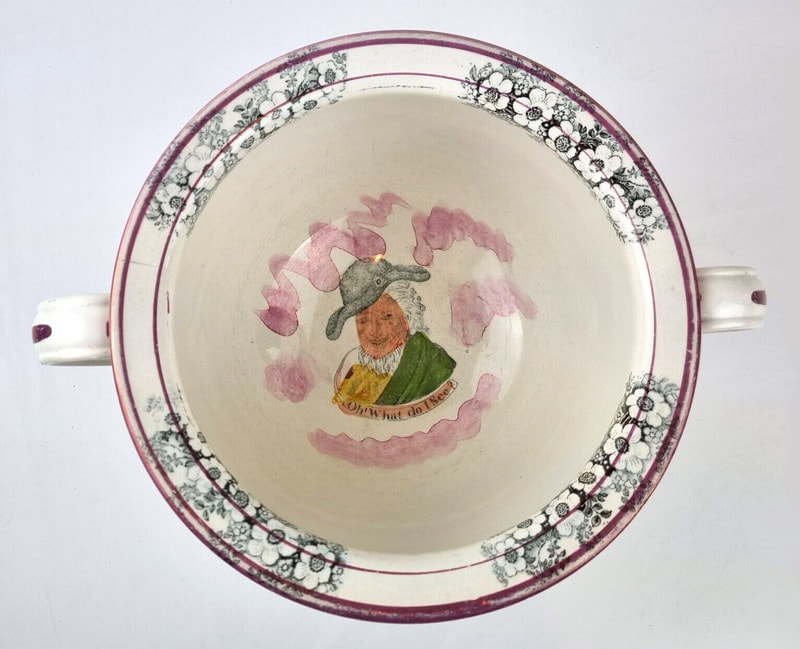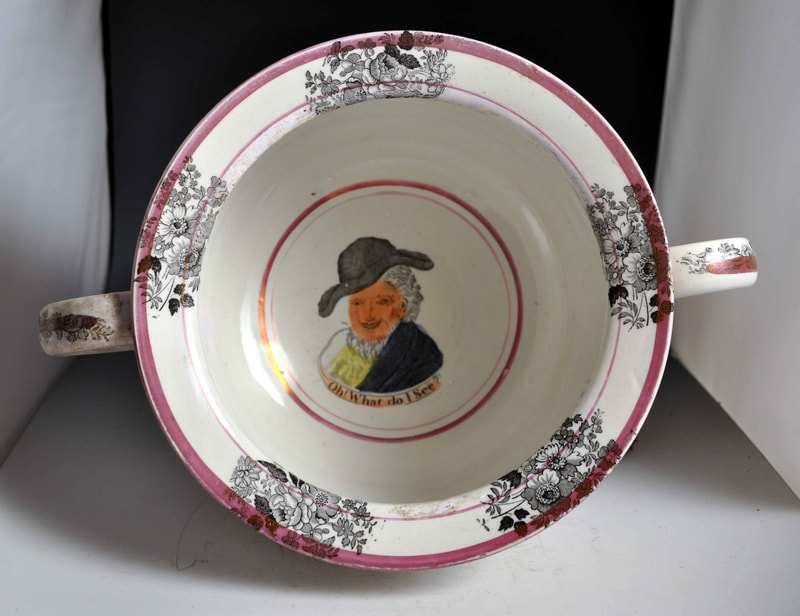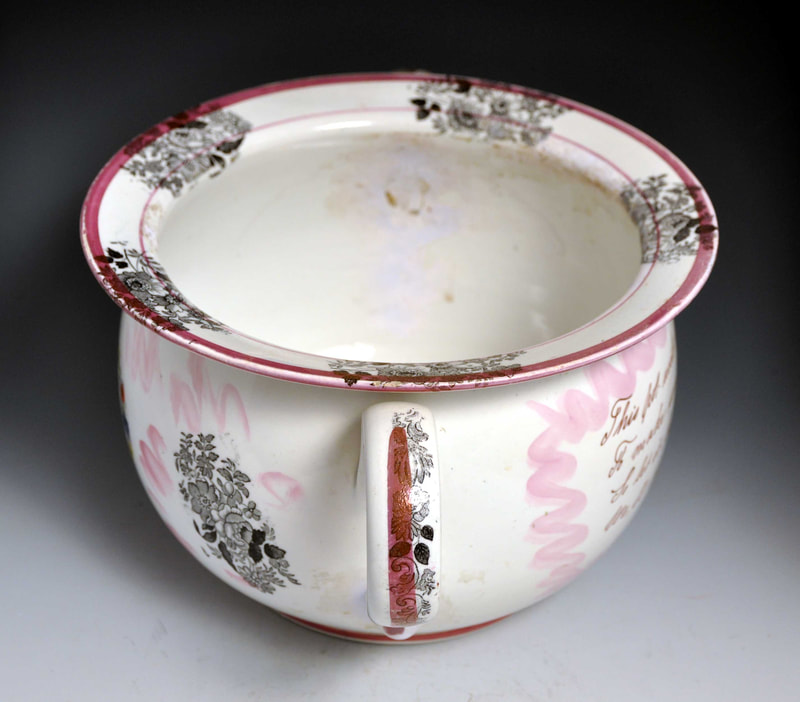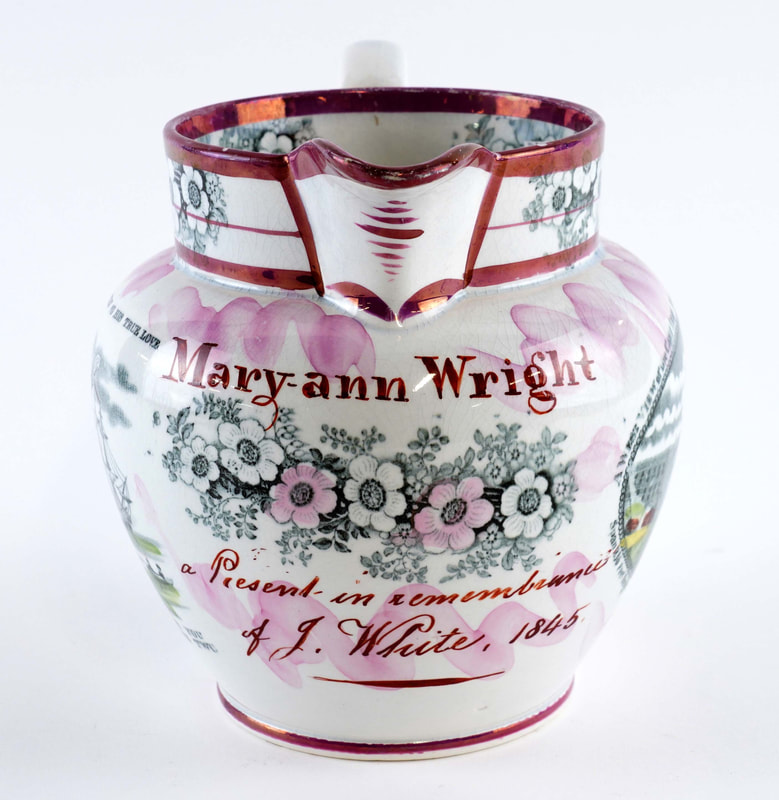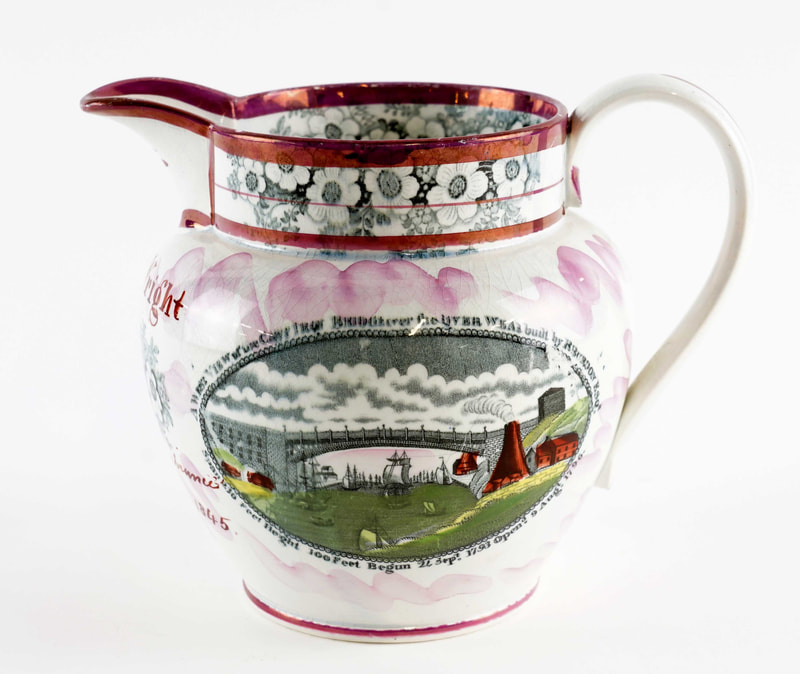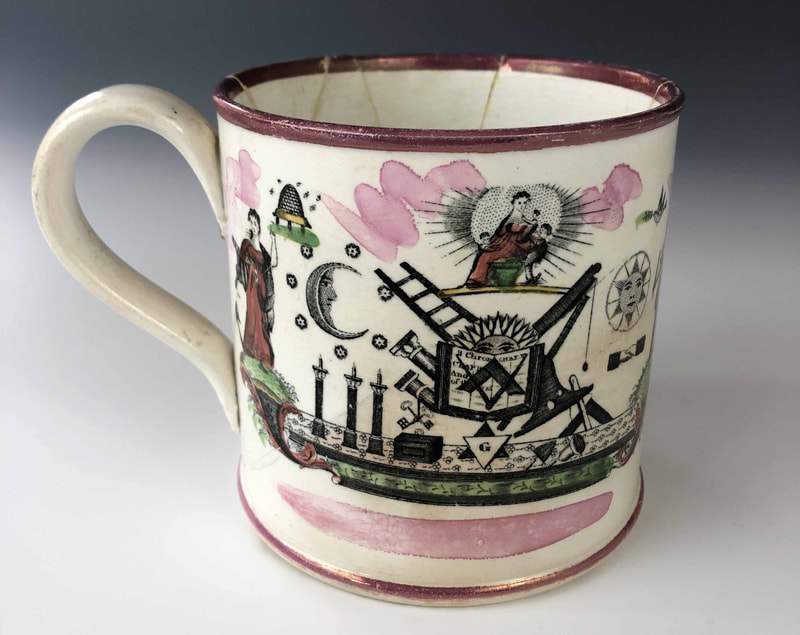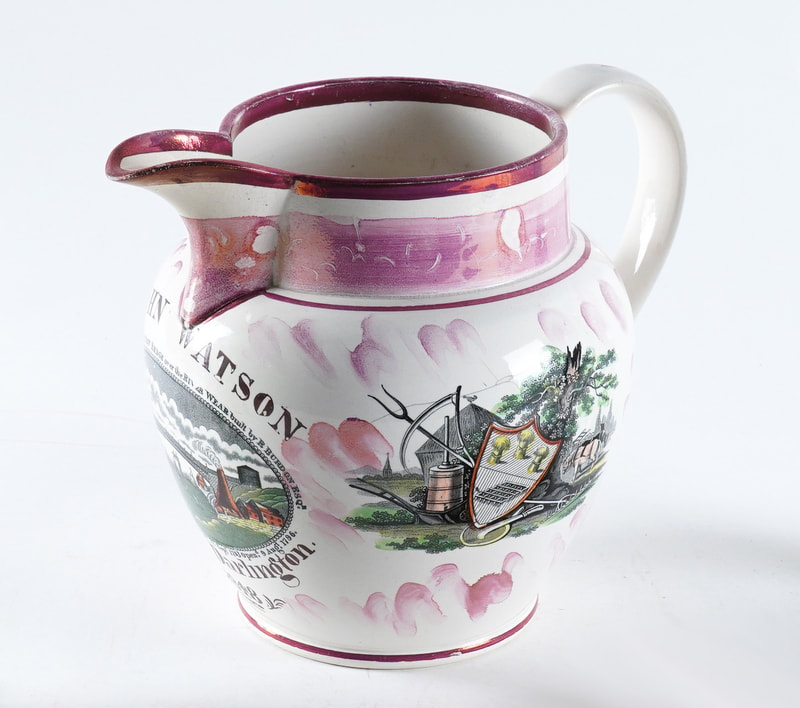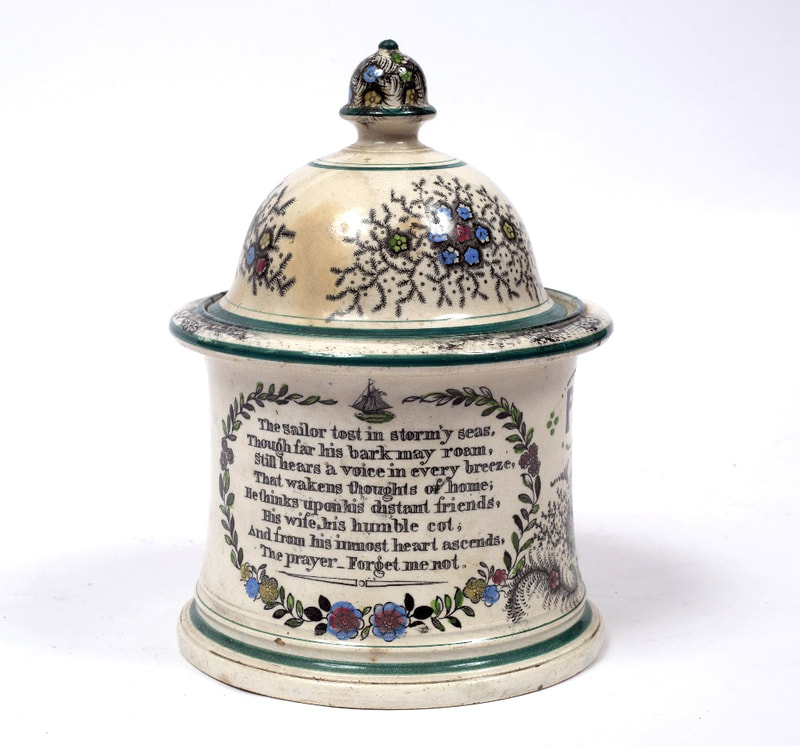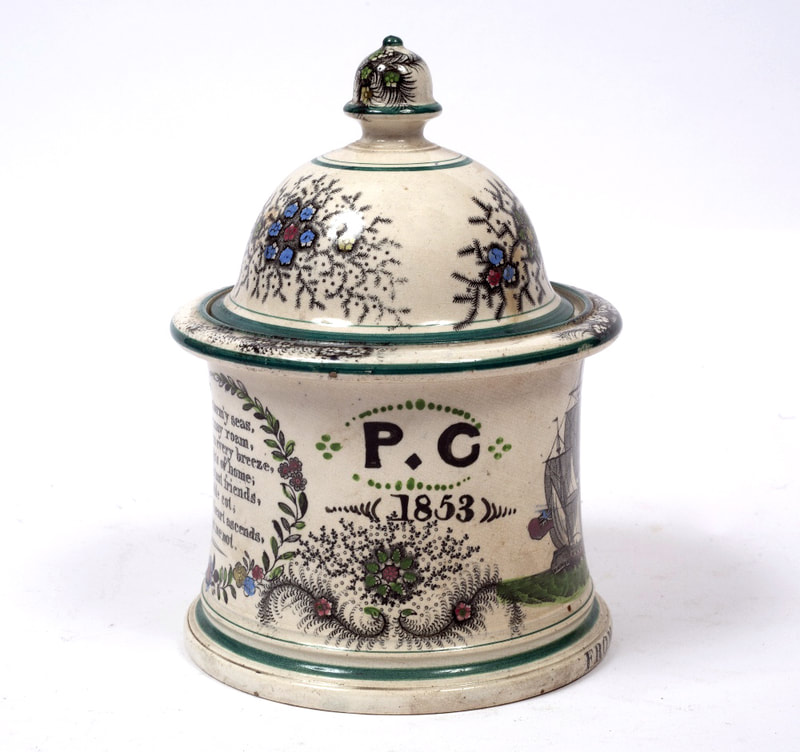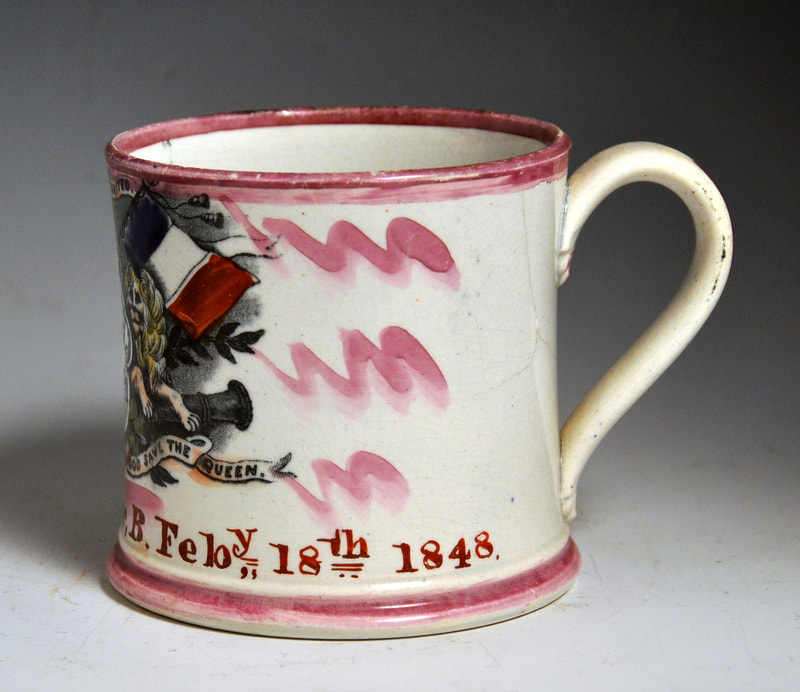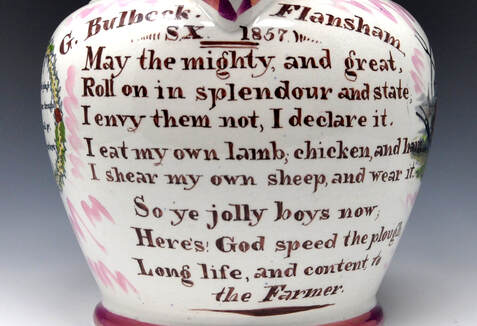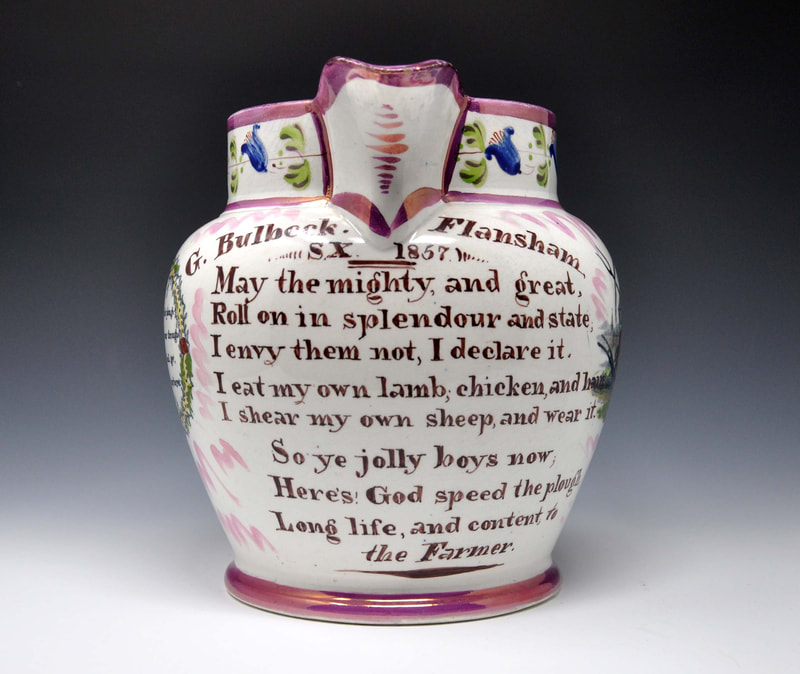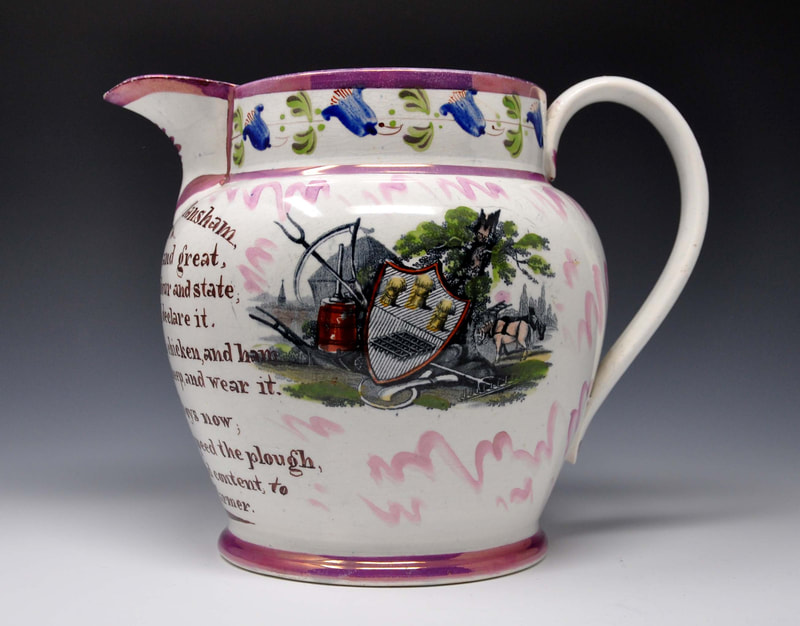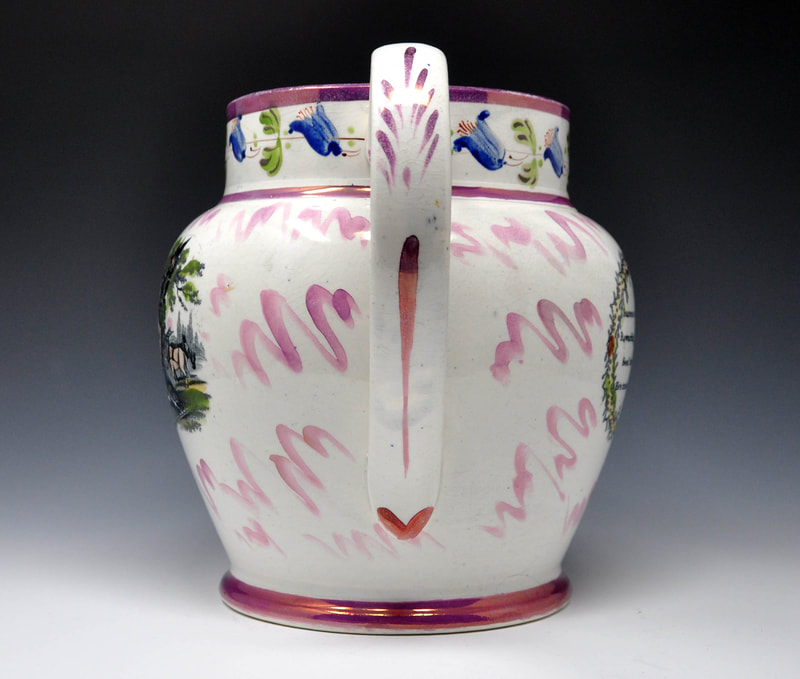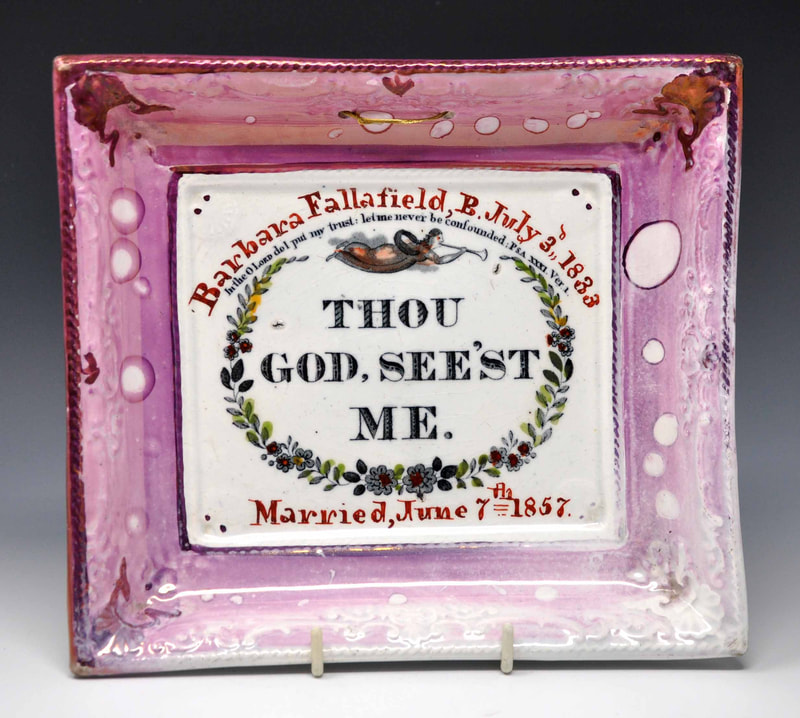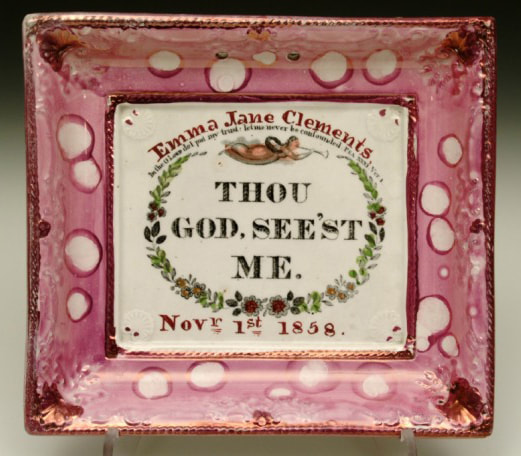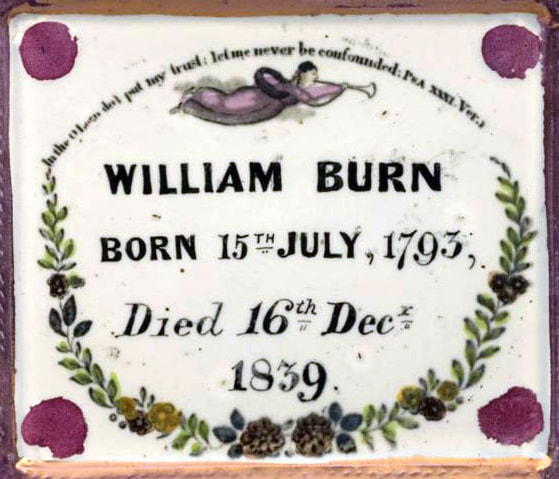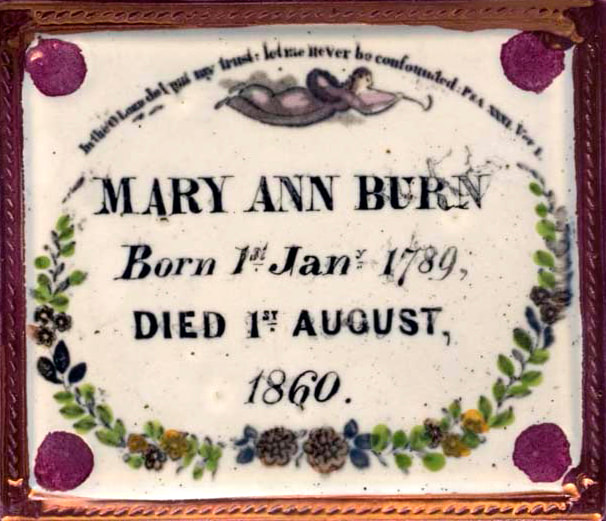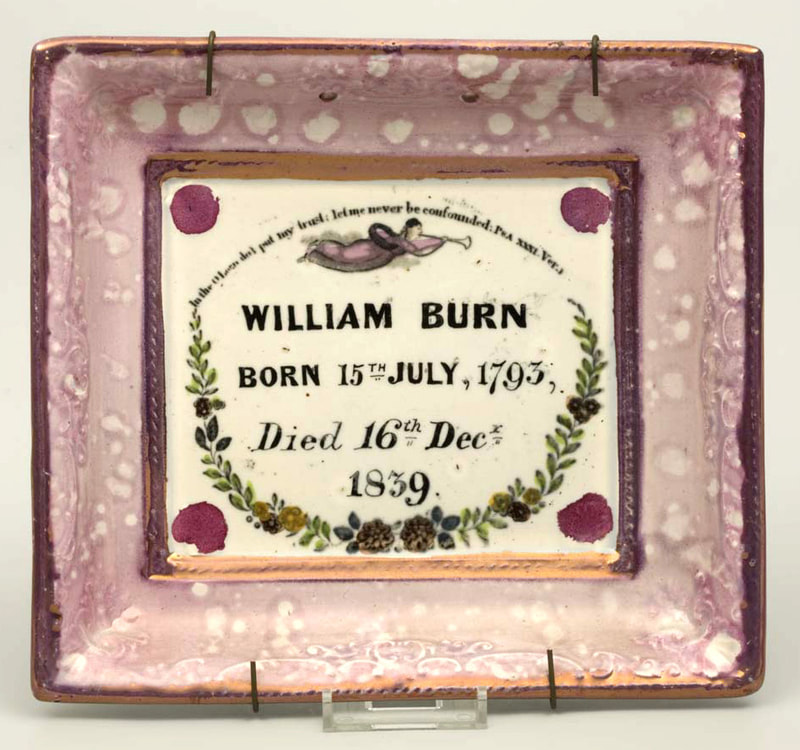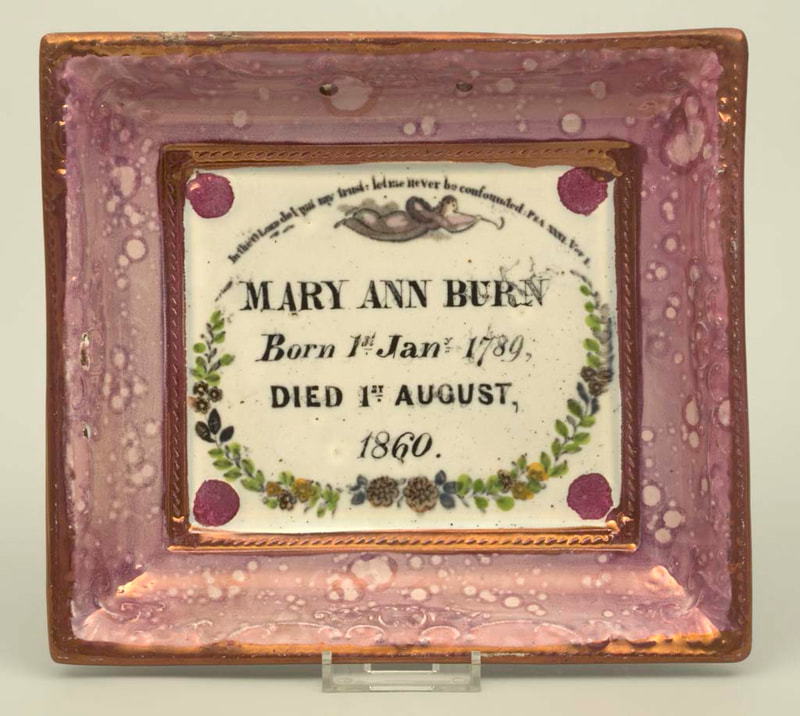Scott inscriptions
|
Apologies to anyone who has watched the items on these inscriptions pages move back and forth. One of the main difficulties has been attributing the distinctive brown frog, often with blue eyes (shown right), which frequently appears on creamware items. The frog is found in conjunction with Baker's bridge 20, signed Edward Barker, which appears on items (shown below) that the Sunderland Museum attributes to Dawson. However, the frog has not been recorded on any item with a Dawson's printed mark. It does, however, appear in conjunction with the unrecorded bridge view shown right, and that bridge transfer appears on a jug with a 'SCOTT Southwick' printed mark. Read more here. A similar frog also appears inside mugs with the bridge 2 transfer (bottom right, from the Sunderland Museum & Winter Gardens, Tyne & Wear Archives & Museums collection), which incorporates the initials 'E' and 'A' on either side of the title, believed to stand for Edward Atkinson, who was co-owner of the Southwick Pottery from 1788-1800. |
The Edward Barker signature on the bridge 20 transfer provides another link to Scott's. Barker was foreman at Scott's Pottery for 40 years. Read more below. However, Barker also engraved plates for Dawson.
Anthony Scott & Co, Southwick Pottery, 1799–1829
This is the earliest dated example I've seen with the Scott-attributed frog discussed above. The text and simple flower decoration are unlike anything else on this page, and the mug is attributed to Scott on the basis of the frog alone. The frog has a hollow pear-shaped body and is most often decorated in dark brown with blue eyes. Sgraffito marks, forming the frog's feet, help join it to the body of the mug.
Bridge 20 group
These items have a variation of Baker's bridge number 20.
The two jugs below are attributed to Dawson in the Sunderland Museum & Winter Gardens, Tyne & Wear Archives & Museums catalogue, but neither has a Dawson printed mark. Norman Lowe has identified a George Crothall married to Elizabeth in 1796 at London St Benet Paul's Wharf, which fits with the 'view of the cast iron bridge to be erected over the River Thames'. However, parliament passed the Bill for the Southwark Bridge to be built in 1811, and the bridge wasn't opened until 1819. So the first jug was likely made sometime between those dates.
The first creamware mug below has an inscription Thomas Thompson. The 'a', in particular, is quite unusual and matches the items above. The mug below has text very neatly trimmed off the bottom of the transfer. Norman Lowe has tracked down a Thomas Thompson born 13/7/1820 to Thomas Thompson (snr) and Mary Wardell, so this could be a Christening present made in 1820. Interestingly, Thomas Thompson (jnr) by 1841 is recorded as living in the same house as William Barker, believed to be the son of Edward Barker, an engraver who received payments from Scott's Southwick Pottery between 1796 and 1800. For 40 years Edward Barker was foreman at Scott's Pottery, dying in first quarter 1841. The second mug has the inscription 'In love and unity we support each other'.
Pink rose group
The next few mugs again mostly have the distinctive brown frog with blue eyes. This mug has a pink daisy above the motto, and four long red and yellow blooms. These decorative features are not unique to Scott, and were used by Dawson and North Hylton, all of which has made these attributions hard to untangle.
This mug has a Napoleonic verse (pre 1815). There are small crosses in the centre of the flowers.
A mug with very similar red and yellow flowers, but without crosses in the centre, and no frog.
A mug, undoubtedly from the same group, but with a bow motif over the verse. Similar bows have been recorded on Robert Maling items and those attributed to Moore & Co.
Another similar to the mug above, and again with the distinctive brown frog.
With red roses
This mug shows that Scott's pottery, and not just North Hylton, was decorating items with red roses. The lower case 'a', shown in the last detail, has a distinctive long arm reaching over the body. This appears on many of the items above.
The fat frog in this mug, with no blue enamel for eyes, is a good match with the frog in the bridge 2 mug shown at the top of this page.
Simplified flowers group
This mug is unmarked, but the flowers and text are again similar to the mugs above. For the reasons set out in the bridge 22 section below, my guess is these items were made before 1810.
A similar mug to the one above, again unmarked, with a hand-painted ship.
Bridge 22 group
The unmarked mug below is from the Sunderland Museum & Winter Gardens, Tyne & Wear Archives & Museums collection, and has the bridge 22 transfer attributed to Scott's. The rose motif is a simplified version of those found on some of the items above.
Although the inscription on this jug, dated 1819, is dissimilar to others on this page, it has the same bridge 22 transfer as the mug above. By 1819, the bridge 22 transfer had become degraded. There is also evidence of re-engraving over time. Therefore, the items like the mug above, with simplified flowers, were likely made sometime well before that date.
Below, a mug of similar form to those above, but with an inscription that matches the 1819 jug above.
Below are two, at first glance, identical plates. However, for reasons we will never know, neighbouring potteries Moore's (left) and Scott's (right), made a plate each for Mr & Mrs Barnaby. The couple are believed to be Nathaniel Barnaby and Anna (or Hannah) Fowler who married in Rainham, Kent on 20 April 1828. Their son, Sir Nathaniel Barnaby, was a naval architect of some note. There was an old clipping about him Sellotaped to the back of one of the plates.
They offer a unique opportunity to compare the scripts of the pot painters at the two potteries in the late 1820s. Note the ampersands in particular (Moore top, Scott below), and compare them to the Charles & C Pinton jug below. The long curly tail of the letter 'y' in 'Barnaby', also appears on the pink lustre items below, from the 1830s. The Scott plate has a gilt border, whereas the Moore border is black. Both plates are impressed with factory marks.
A Scott & Sons, Southwick Pottery, 1829–1841
The inscriptions found on Scott's later items, often in brick red or burnt umber enamel, are fairly consistent over two decades. Note the exaggerated tail of the lowercase 'y'.
Although unmarked and undated, I've included these two plaques here because of similarities of text. Particularly the lower case 'y' and 'g'. The second plaque form is peculiar to Scott's.
Two jugs with the same inscription. Perhaps there were originally three graduated jugs. In the absence of a dated inscription, it is hard to be certain which partnership made these jugs, but my guess is they are c1840. They are from the same copper plate, or plates, as the jug above.
Scott Brothers & Co, Southwick Pottery, 1841–1872
There is a blacked out cartouche (above the date) which on earlier items contains a maker's mark for Scott & Sons. It seems that when the partnership changed in 1841, the old 'Scott & Sons' marks were erased (see also under the bridge transfer below).
Another jug with obliterated Scott & Sons printed marks.
These two hand-painted chamber pots (above and below) have transfers with obliterated printed marks.
Although dated 1848, the Crimea transfer suggests this mug was made c1855.
